SEGA SATURN AREA | MAIN FEATURE

Jump to --> [History] [Today] [Hardware] [Games] [Gallery] [Emulation] [Misc] [Links]
Features Online
The sombre story that is the SEGA Saturn - a console whose undeserved downfall was eclipsed by the downfall of the company that created it.
As SEGAs internal troubles raged on, by the time certain people in the company realised what was going on, it was too late - a situation the company would not recover from for over 10 years.
This played out backdropped against one of the most turbulent and revolutionary times in gaming history: The move to 32-Bit.
Yet for all the problems the system faced, it continues to remain as one of the most cherished by its fans proving the hardware and its treasure chest of games were not enough reason it did not command a bigger role in the oncoming gaming revolution.
For details on its inception, regional performance and legacy checkout the History of the SEGA Saturn Feature.
THE SEGA SATURN TODAY
So Today, hardcore Saturn fans still have their consoles setup still playing through games they are most likely learning about. This is becoming tricky as many modern TVs are dropping the SCART connector. A good alternative are projectors with S-Video.
Real hardware is still easily obtainable. As yet there have been no official hardware re-releases from SEGA or their third-party manufacturers. It has become some of the most collectible SEGA hardware in existence and thus potentially the most expensive. There are some rare third-party versions of the hardware and the later PAL games fetch high prices as there were limited copies.
Effort has been made by talented enthusiasts to preserve the software as the CD-ROMs are over 25 years old now and cannot be copied easily due to physical copy protection. Hardware mods can provide access to a SDCard connected to the CD-ROM drive or via the Video CD cartridge port where games (images of the CD-CROMs) are stored.
The system has been emulated to a reasonable degree on the PC making many games playable though a few are still not. A modern PC with a decent graphics card should suffice and there are USB Saturn controllers available.
Very few of its original games have been re-released which in turn makes them very rare though there have been some ports to other platforms. It has been implied that some games will be released under the recent SEGA Forever brand though this has yet to happen and unlikely due to the complexity of Saturn emulation.
Plenty of community websites exist dedicated to the system offering discussions, historical finds, reviews and other content such as soundtracks, game hacks and prototype/unreleased games now surfacing.
dA small homebrew development scene which has some basic games and utilities with a focus of creating better development tools for homebrew is active. For example, the Jo Engine is helping new homebrew developers. There are some ambitious projects such as Sonic Z-Treme by the very talented Maxime-XL2 (which has a downloadable demo available) with early work being very impressive pushing the Saturn further than most commercial games ever did.
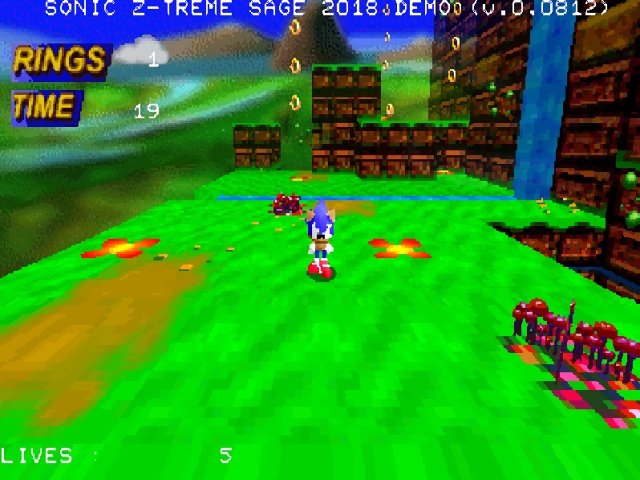
Sonic Z-Treme
Coding competitions ran up until approx. 10 years ago with some impressive results – though a good number of them were for creating emulators and utilities. Check Youtube for some examples.
For much more content for SEGA Saturn zen - check out some if the URLs in the Links section below.
HARDWARE OVERVIEW
The console only exists in one general design from SEGA that utilises a flip-lid. Some versions were manufactured by third parties but otherwise are officially licensed.
The Saturn architecture is designed for the logical distribution of the processing of games. Various tasks are assigned a CPU. For example, Virtua Fighter uses one CPU per character. It is very complicated. There are a great number of issues documented as well as some solutions by talented programmers. Aside from this, the Saturn is more of a true arcade experience.
SEGA touted the Saturn as their first multi-media machine being able to not only run games but use CD Audio, CD+EG, MPEG video and Kodak PhotoCD standards. Unlike the previous consoles there is no backwards compatibility with any previous SEGA consoles.
The use of eight processors, three of which are powerful 32-Bit chips, affords deep resources to give unlimited reign to programmers as almost anything can be performed in software but with it a complexity in programming.
The system's main specifications are in the table below. Unlike the Playstation, the hardware has the ability to be expanded via the cartridge port and the dedicated MPEG port.
CPU |
Dual 32-Bit RISC Hitachi SH-2 @ 28.6Mhz (25MIPS) |
RAM |
16Mbit (2MB) Work RAM |
Video |
Resolutions of 352x224, 640x224 and 704x480 16.7 Million Colours (24-bit) VDP1 - Geometry and Sprite Engine Geometry Engine Sprite Graphics VDP2 - Background and Scroll |
Sound |
SCSP Digital Signal Processor (DSP) @ 22.6MHz |
Storage |
CDROM Intelligent 2x CDROM 300KB/sec (DMA to RAM) |
Boot ROM |
4Mbit IPL ROM |
Ports |
Cartridge Port |
The Hitachi SH2's at the centre of the Saturn are 32-Bit and of Reduced Instruction Set Computing (RISC) design each capable of 25 million instructions per second (MIPS) running in parallel at 28.6Mhz. Each has 4KB of cache RAM. Logically, one CPU is considered master and the other slave. These provide the main processing engine and work in concert with system's more specialised chips.
The processors are the only slight similarity it shares with the 32X and still there are some differences. Both of these chips are connected directly to RAM allowing for the data exchanges to take place without wait states thus speeding up processing.
In comparison the PlayStation's 30 MIPS, Atari Jaguar's 26.6 MIPS, PC Engine's 15.5 MIPS and the Amiga CD32's 3.5 MIPS and it becomes obvious how much potential the Saturn had to become the dominant console in the mid '90's games market.
The Hitachi SH-1 CPU is another 32-Bit RISC capable of 12.5 MIPS and runs at 20MHz. These processors have been used in some of SEGA's arcade boards.
The graphics processing of the Saturn is done by two dedicated 32-Bit processors; VDP1 and VDP2 both are of a custom design derived from SEGA's advanced arcade systems. The graphical tasks are divided between the processors. By working together these chips produce a visual experience that cannot be produced by a single chip. There are multiple resolutions available with the maximum being 704x480 with 16.7 Million simultaneous colours making the Saturn the only system at the time to offer such a high resolution and some games were capable of 60 frames of animation per second in this mode eg. Virtua Fighter 2.
VDP1 is the geometry engine and produces all character and gameplay images/objects via sprites and polygons. It has dual 256KB frame buffers for applying effects such as rotation and scaling. The Saturn's sprite abilities are far superior to that of the Playstation. Polygon abilities are quoted at approx 500,000 flat shaded polygons per second. Note the use of the word approx. The Saturn VDP's are optimised to render surfaces in quadrilaterals instead of triangles. Typically developers never used this technique to optimise their games and stuck with triangles (the usual way to create polygons) thus giving the Saturn a performance hit. Texture mapping functions with 512KB cache for the storage of textures and Goraud shading (light sourcing) is available.
VDP2 is the background and scroll plane processor. It can provide 5 simultaneous scrolling background layers, 2 simultaneous rotating playfields giving dynamic depth and perspective.
The Saturn has plentiful amount of memory at its disposal. Main work RAM is 16Mbit (2MB), 12Mbit (1.54MB) for video RAM in addition to the caches that each VDP has, 1Mbit audio for samples and tunes, 4Mbit (512KB) CDROM buffer/cache and 256Kbit of Internal Backup RAM for game saves so the machine does not require a separate memory card.
Any data stored in the battery backup RAM is retained using a standard CD2032 battery. They will generally need to be replaced during the course of the consoles life. There is a small reset button located at the back panel which when pressed will clear all settings and data stored in the machine.
Audio hardware comprises of a formidable 24-bit SEGA Custom Sound Processor (SCSP) developed with Yamaha that includes a 128-step Digital Signal Processor (DSP) running at 22.6MHz. Provided is 32 channels of PCM sound as well as 8 Frequency Modulation (FM) channels with sampling rates of 44.1Khz (CD Quality). This processor gives the Saturn audio capabilities outstripping both the Nintendo 64 and Playstation.
Reducing Noise
If intending to connect your Saturn to a high-quality audio processor/amp for surround or to capture a soundtrack (as I did for the Panzer Dragoon II: Zwei Feature) then I highly recommend the use of mains power conditioner as all those processors inside the console generates lots of audible noise.
It is assisted by a Motorola 68EC000 sound processor running at 11.3MHz (relatively powerful) and allows programmers to produce effects such as 3D sound and reverb.
QSound Technology is also used to enhance the surround and games that support it shown by the logo on the back of their case.
Since audio is managed by dedicated processors its performance is not impacted by the rest of the system and produces some stunning experiences. The music for NiGHTS and Panzer Dragoon II: Zwei are good examples.
The Saturn CDROM drive is a double speed 'intelligent' (independent) controlled by the Hitachi SH-1 RISC CPU running at 20MHz. It is capable of a transfer rate of 300+KB/s and has Direct Memory Access (DMA) - a method used in PCs to reduce processing loads on CPU's. Its own cache and dedicated processor can decompress data off the CD on the fly. There is no overhead of the main system used in accessing the CD drive. Generally booting and loading times are quick. It is possible to use both 8cm and 12cm CD's.
The System Control unit (SCU) (sometimes referred to as the Saturn Control Unit) acts as the co-ordinator of the entire multi-processor system and connects the three busses. It is a custom SEGA design. It is composed of two modules:
A DSP used for a fixed-point geometry unit for matrix/vectors calculations such as 3D transformations and lighting faster than the main CPUs. It runs at half their speed however (14.3MHz) and has an instruction set of its own.
A DMA controller that controls access to RAM across the three busses without the need of intervention from the CPUs.
A System Manager and Peripheral Controller (SMPC) built around a Hitachi microcontroller manages the I/O from peripherals such as the controllers.
When the console is powered on, an animation creates the Saturn logo with a background jingle. If a disc is loaded when powered on the BIOS will attempt an automatic boot. If the lid is open, if there is an error or another type of disc loaded such as an audio CD, then the CD player/system settings interface will be displayed instead along with a relevant error message. A checking process is performed when the console boots or when the lid is closed as games are region locked.
There are differences in the BIOS from the different regions. The US and European BIOS are the most similar whereas in the Japanese version, the animation creates a different logo with a different jingle and the audio notifications for error messages are different along with the change in characters for language.
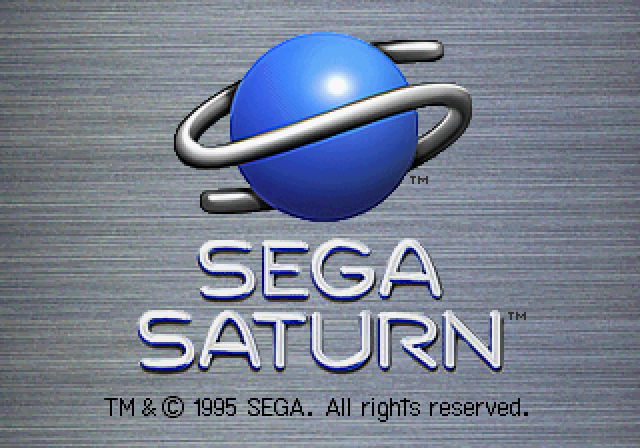 |
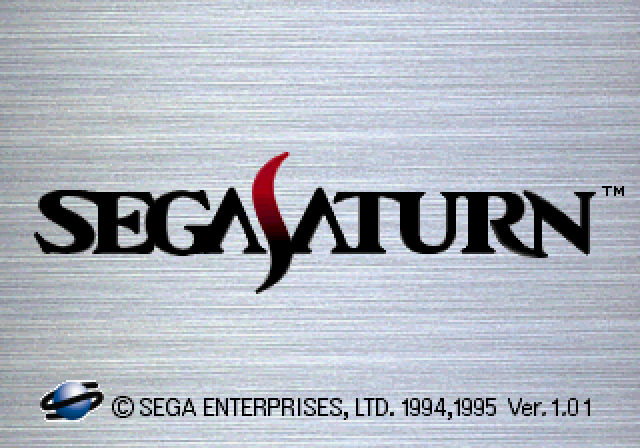 |
European and US BIOS |
Japanese BIOS |
There are further differences between the versions used in the officially licensed clones of the console. The specific BIOS version number can be found by accessing the System Settings through the CD player interface.
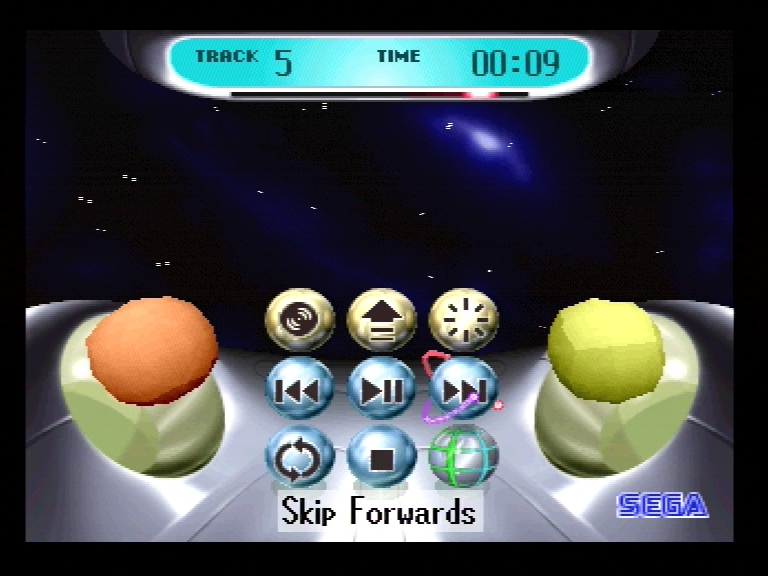 |
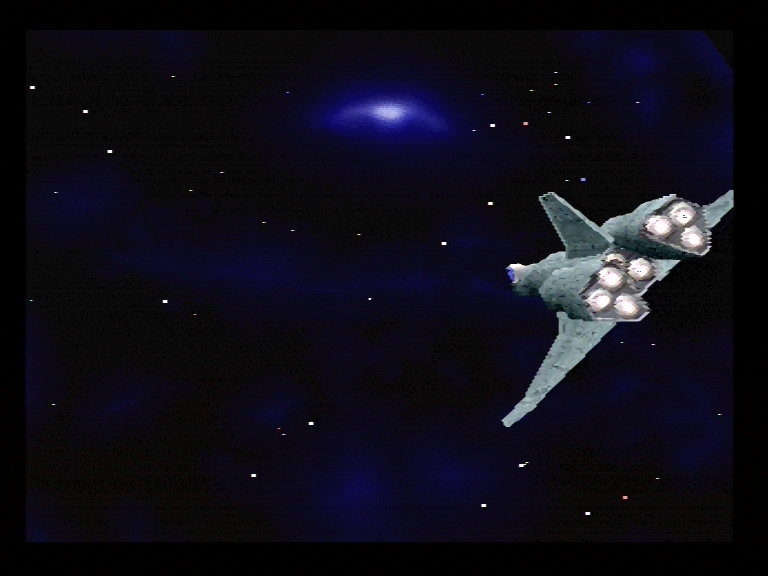 |
The system's BIOS essentially comprises of a CD player utility, memory manager and options for setting display language etc. When playing music it is possible to hide the dashboard and watch a graphic of a ship flying through space.
The system is compatible with CD Audio, CD+G and CD+EG an extension to CD+G for more colours. Other standards included Photo CD and Video CD which can be used through accessories.
The only visible differences between the BIOS versions are the logo that it displayed upon boot. The specific BIOS version number can be found by accessing the System Settings through the CD player interface.
Original game discs have an additional ring around the edge of the CD, which bears copyright writing relating to SEGA. Whether it is normal data with unusual patterns, specially burnt data or even a complete hologram is not known. However, to this day nobody has been able to reproduce it on writable CD media, hence the term 'copy protection'.
In order to play backups, a mod chip is required which is not always practical. There is a technique by means of swapping discs that can boot from a CD-R without a mod chip. It is very tricky and may damage the console. More information is below.
The system is fully Y2K compliant.
Two controller ports are available. The Saturn's standard controllers are very comfortable and renowned for being the best for playing old-skool games, particularly 2D fighters such as X-Men Vs Street Fighter and The King of Fighters. The D-Pad struck a perfect balance for sensitivity. There are six standard buttons and two flippers. It has since been re-released for Playstation 2/3 and PC with a USB connection.
The first version of the controller released in Europe was pretty awful using a modified, much less ergonomic shape with 'harder' casing. Luckily was replaced to match the Japanese version later.
The serial port is for the connection of accessories, though it mostly was used for connection to other consoles for network play.
The AV port allows video output of RBG, Composite, S-Video and RF with stereo sound via 9-pin Mini-Din. The system was only supplied with a scart connector (Euro) and a separate RF cable needed to be purchased. This caused some irritation particularly in the UK since many TV's were not equipped.
Delving further into the graphics capabilities of the Saturn there is support for several modes that were never implemented even by much later consoles such as PS2. For example, VGA, EDTV and Progressive displays. The Saturn can do these but not with any of the standard video cables of the time so therefore no games were developed to use these modes.
Power is supplied via a standard figure of 8 lead to an internal PSU. Voltages vary between the territories.
The SEGA Pluto
In 2013 there emerged two prototype consoles named Pluto which is in line with R & D naming scheme of the time.
The Pluto's were created by SoA and based on Saturn hardware but with a Netlink built in.
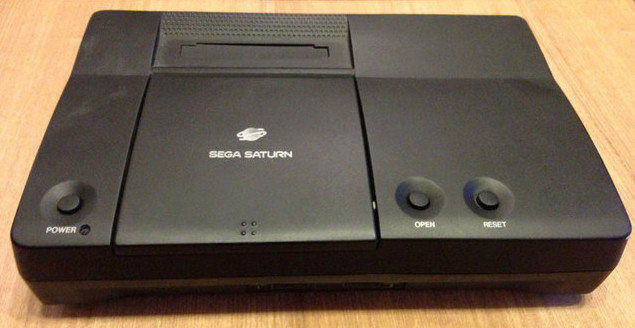
Pluto Prototype Console
As you can see in the image above it is larger than a typical Saturn with a different layout and is reported to be heavier. A video of one of these units functioning can be found online.
One of these was sold was a little as $1 originally at a boot sale! Subsequently both of these have since been sold. One to a very happy SEGA fan for around $7000 and the other has been listed on Ebay a few times not fetching its reserve price.
Accessories
All accessories are known to work with machines from any region. There are a number of third party manufactures who have released control pads, light guns and memory cards.
Some accessories were planned but never released such as a keyboard and hard drive.
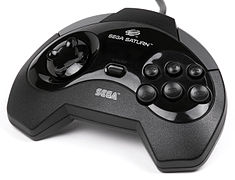 Standard Controller |
An additional standard controller. This version was only ever released in Europe. |
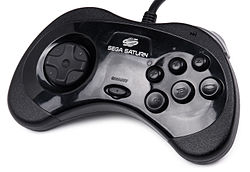 Standard Controller |
An additional standard controller. This is the original design that did not get released in Europe until almost a year after the console was launched. It is oft hailed as the greatest 2D controller. Also available in white and grey. |
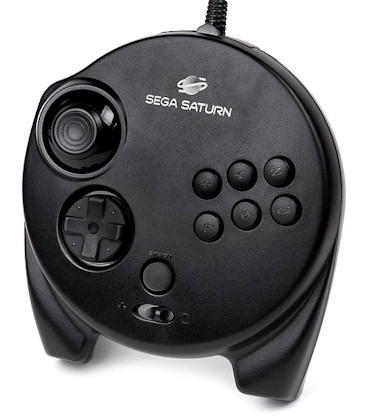 NiGHTS 3D Controller |
NiGHTS 3D Controller - An upgraded controller with an analogue stick released specifically for NiGHTS but is compatible officially and unofficially with many games such as Panzer Dragoon II: Zwei and Burning Rangers. It has a switch to disable the analogue stick for compatibility. Also produced in white. Its design became the basis for the Dreamcast controller. |
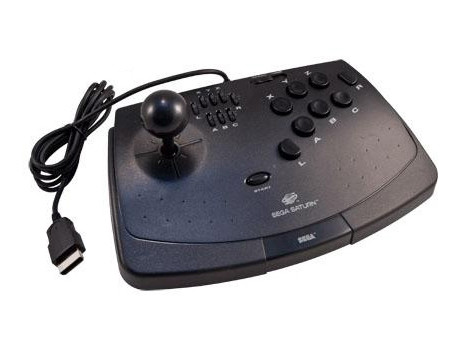 Virtua Stick |
Designed to provide precise control for games such as Virtua Fighter and shoot'em ups. It also has rapid fire capability. |
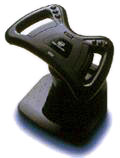 Racing Wheel / Arcade Racer |
Instead of a traditional wheel it is oblong with handles. It is an analogue device for a smoother more realistic response. The main games that utilised this were SEGA Rally and releases of Daytona USA though more games were compatible. |
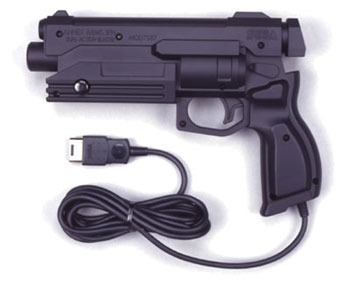 Virtua Gun |
A replica of the arcade game accessory. The European version has very bright blue casing as it was thought too authentic in black (what with the cable hanging out the bottom and all). |
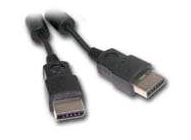 DirectLink aka Link Cable |
Allows connection of two Saturn's for multiplayer gaming. Two TV's and copies of the same game are required. It connects via the system's serial port. Several third party versions exist. |
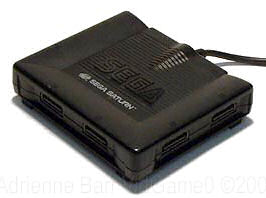 Multi-Tap |
Allows the connection of six controllers to one port and more than one multi-tap can be used on a console. Guardian Heroes is an example of a 6-Player game. |
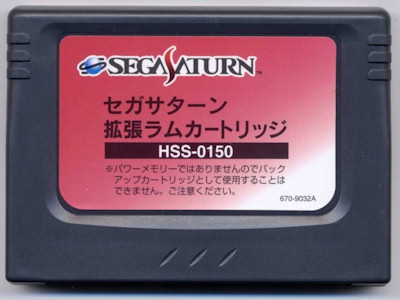 RAM Cartridges 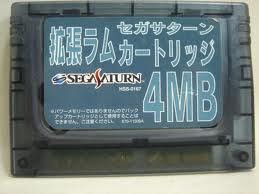 |
The RAM cartridge expanded the amount of Main Work RAM that the Saturn had to run games. These existed in 1MB (8Mbit), 2MB (16Mbit) and 4MB (32Mbit) versions and were manufactured by several companies in Japan only. This came about as ports of arcade games required more RAM (particularly those that came from SEGA's Titan arcade board) and rather than crippling the port, a low cost cartridge resulted in near perfect translations (particularly Capcom ports) and the loading times were drastically reduced with better more colourful animation. It did not boost 3D performance. Unfortunately the cartridge was never released in the West as market conditions simply did not justify the expenditure. This angered fans but cartridges were easily available through importers. Cartridges had various designs as they were usually bundled with the game that required it. |
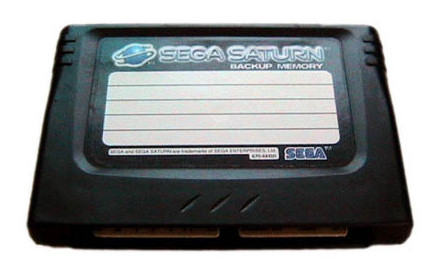 Backup RAM Cartridge |
4Mbits (512KB) of removable storage for saving game files. Files can be moved to and from the console to cartridge and vice versa. |
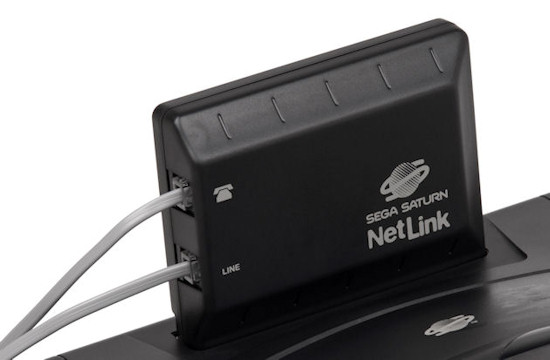 Netlink 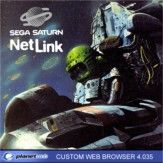 |
Essentially a 28.8kbp/s modem that allowed gamers to browse the internet, send emails and play Netlink-compatible games. Five games were able to take advantage of this. They were Daytona USA CCE, Duke Nukem 3D, Saturn Bomberman, SEGA Rally Championship, and Virtual On. |
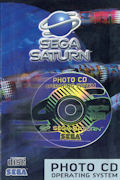 Photo CD Operating System |
Allows the viewing and gentle manipulation of images recorded in the Kodak PhotoCD Standard. |
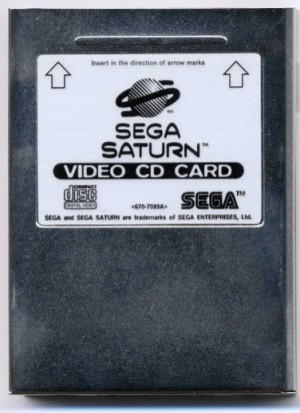 Video CD Card |
Required for the playback of MPEG Video CDs: a semi-popular format in the mid 90's as a means to replace VHS tapes. This also goes by the name of Saturn Movie Card. Some versions of the console had this built in. |
 Keyboard |
Very similar to a standard PC keyboard and connects the controller port. Typical uses were writing emails (Netlink) and Saturn Game Basic development software. Only released in Japan. |
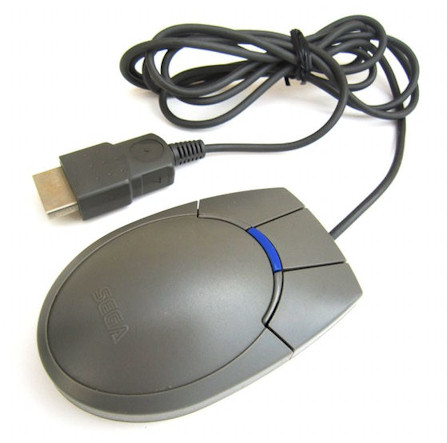 Shuttle Mouse |
A three button mouse that connects to the controller port. Also available in white. It was suited to web browsing, RPG and strategy games. It is also unofficially compatible with Panzer Dragoon II: Zwei. |
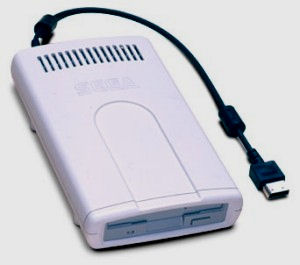 Floppy Disc Drive |
Plugs into the serial port at the back of the machine. It is essentially a way of providing more storage for game saves. Released in Japan only. |
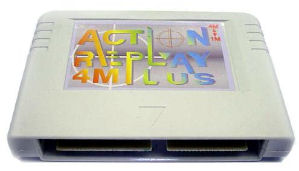 Action Replay 4M Plus |
(Unofficial) From Datel/EMS and an invaluable accessory for import gaming. This cartridge has 1MB or 4MB expansion RAM (depending on what the title needs), battery backup RAM, cheat functions and territory bypass. The earlier (and now rarer) versions have an integrated serial port for connection to a PC allowing searching for other cheats. Some companies even used this as a means of a cheap development kit! They can still be found on Ebay from foreign lands for approx. £45. It is also possible to buy (re-flashed if you are feeling brave) with alternative firmware called Pseudo Saturn Kai which provides an array of features most notably being able to boot CD-R’s with no modchip. (latest version 6.314) however there is some functionality lost such as support for game saves in the cartridge. There are regular updates so check out: https://ppcenter.webou.net/pskai/#download Ideally two of these cartridges would bring you Saturn zen. |
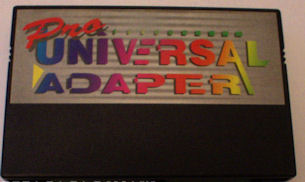 Universal Adaptor |
(Unofficial) A cheap device from Datel that simply bypasses the region checking to allow games for any region to be played on any Saturn. |
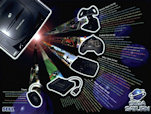 |
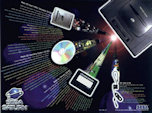 |
The Titan (ST-V) Board
In true SEGA fashion, an arcade board was produced based on Saturn hardware with the only difference being the arcade board having more RAM. There exists two versions; one US and one Japan.
Games were cartridge based to a maximum size of 384Mbit (48MB) as opposed to CDROMs. Although the console which is was derived may have suffered problems, the ST-V board became one of their most successful boards ever. Many games released on this board were ported such as Die Hard Arcade, Cotton Boomerang and Virtua Fighter Kids. For more information about the board and games check out http://www.system16.com.

The SGL
The SEGA Graphics Library deserves a mention since it was critical to bringing many games to the console. It was designed by AM2 to help the task of programming the console easier whilst at the same time achieving good performance. Games such as Virtua Fighter 2 benefit heavily.
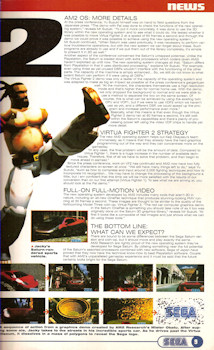
This article was scanned from SEGA Magazine Scan in 1995.
It also is a major factor in the development of the homebrew scene.
A leaked version is available on the net and has assisted with the creation of the homebrew scene.
The Saturn System-Discs
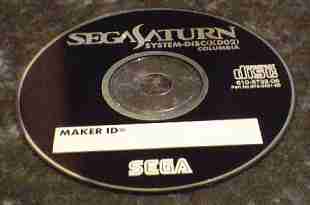
Saturn System Disc
There exists some very special and very rare official CDROM's that were sent to developers which when booted allows a Saturn to then read CD-Rs without the need for a mod chip (and possibly CDRWs) for testing of games in development. These were individually numbered for developers.
They are essentially soft-mods and work (similarly to a mod chip) by disabling the reading of whatever security data is on the outer edge of a Saturn disc. How it functions technically is yet still unknown. Some were uncovered and subsequently sold on Ebay a few years ago
When a system boots from a system disc it remains at the SEGA logo with the word "completed" at the top left corner of the screen. CD-R's can then be used until the system is reset or powered off.
There are disc images on the net to burn a copy of one of the several Saturn System Discs (KD01, KD02, KD03) that have appeared but obviously the content will be on a CD-R anyway requiring a mod or swap trick to be able to boot it.
As a purely software way of telling the system to turn off security, perhaps it could be put into an Action Replay-like cartridge.
Copy Protection
The Saturn's copy protection relies on an outer 'ring' of data that cannot be read or replicated by conventional CD burners. When a disc is copied only the game data itself is copied. The Saturn always checks the outer security data on boot, hence backups will not boot on an unmodified Saturn. This protection ring is pressed into the blank media before it is used in game production and is too far beyond the tracking limits of any CD drive (laser) to be read.
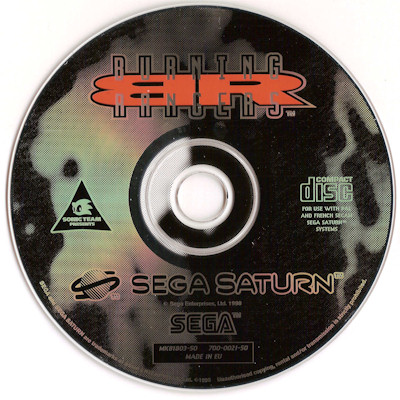 |
 |
Saturn CDROM - Art Side |
Saturn CDROM - Art Side |
Saturn mod chip works missing the security ring therefore skipping the security check allowing the use of CD-R copies of games. There is more information about the mod chip below.
Mods
It is also possible to mod a Saturn console to provide a 50/60Hz switch and swap regions. These require some delicate work to avoid damaging your console.
For instructions check out: http://www.mmmonkey.co.uk/.
GAMES
The Saturn games library is a complex subject. Whilst easily derided by the uneducated, it contains some of the most artistic, technically accomplished and critically acclaimed games of any console thus far creating a platform for the most hardcore of gamers. Unfortunately the limited success of which precluded these reaching a wider audience but in turn created a buzzing import scene. In this section are some of the highlights that gave the system its character and identity.
People who have checked out the Saturn for what it is rather than how it performed in the marketplace have found there are some true classics that are unique to the platform some of which have became the most revered titles in the whole of gaming.
It was also the only console where SEGA's arcade hits of the day could be played to near perfection such as Virtua Fighter, Daytona USA, SEGA Rally, Virtua Cop and The House of The Dead.
Where many third party developers struggled with the complexities of the machine, lack of third party support was soothed by the fact the SEGA as a development studio was firing on all cylinders despite all the general discord within the company. This created a loyal following which still exists to some degree today.
Third Party Efforts
There were some noble contributions from third-party developers. A special note must go to Capcom and SNK since they supported the machine much more than most (as they would later the Dreamcast) along with Treasure who all produced some of the best and most sought after games.
It was the final days of the console that saw the best releases especially in the West. In Japan there were an estimated 1000 releases that contained the best. Had the proliferation of the games been wider then things could have been different. A common and legitimate gripe is that most of the best games were released in Japan only. This problem encapsulated almost all shoot'em-up releases but this meant Beat'em-ups and RPG's along with the bizarre titles such as dating and train simulators and horse racing, would never be translated. The import scene created a loyal cult following because many of these awesome titles were exclusive to the system simply because of its 2D power and any Playstation versions (if they even existed) were inferior.
Like any console there was also an amount of crap in the library such as Street Fighter: The Movie, Clockwork Knight, Wing Arms and Johhny Bazookatone. Best avoided.
On a side note there are no crappy FMV titles such as Night Trap or Road Avenger either. SEGA and 3rd parties alike seemingly learnt their lessons from the Mega CD/SEGA CD days!
Guardian Heroes from hardcore developer Treasure was an updated take on the 2D side-scrolling brawler and probably the closest thing to a Streets of Rage game on the system. It took basic brawling action and combined some RPG concepts of levelling up characters abilities (such as strength and magic) along with alternative routes creating multiple outcomes with branching storylines. The actual gameplay gets chaotic when battling hordes of enemies - but in a fun way.
The Guardian Heroes are a group of mercenaries that are seeking a legendary sword. They find it only to be pulled into a war to save the kingdom from a corrupt royal family and a feud with wizards and spirits that has raged for thousands of years.
The game had not only four player co-op, but a battle mode allowing 6 players from a selection of 30+ characters making for a brilliant battle/VS game. It became a beloved cult classic. It also serves as a showcase for the Saturn's 2D abilities (more below) along with full screen video and a spectacular array of sprite effects. Though released in all territories it is rare and expensive to locate especially in English.
After years of pleading for a sequel or an update, a sequel was released on the Game Boy Advance in 2004/5.
In 2011, the original game was ported to Xbox Live Arcade which included several new features as well as the usual improvement in graphics.
Alternative beat'em ups include Die Hard Trilogy, Warriors of Fate and Nekketsu Oyako.
Sonic Team
The Saturn was the platform in which Sonic Team branched out creating unique games that are still fondly remembered today. Until this time they had pretty much only produced the Sonic The Hedgehog games on the Mega Drive/Genesis.
NiGHTS Into Dreams was SEGA's flagship game of 1996 going head to head with Crash Bandicoot and Mario64. It was one of the most unique and critically acclaimed games of all time the experience of which has never been fully re-captured.
It is a trip into the dream world of two children where the fast pace and aerial acrobatics destroyed the Nightmarens. The world it created was compelling with fantastic vistas and excellent music running directly off the Saturn's sound chip.
Sonic Team created a traditional 2D game experience contained in a 3D world that had the benefits of both - ergo 2.5D. Though the game showed the Saturn did not have the 3D power of its competitors the 2.5D world brought the benefits of both. A new controller was even designed to enhance the experience but where NiGHTS excels most is its replay ability factor. It is one of the few games that people frequently return to some 10 years later.
State of Games in 1996
Remember the context of gaming back (in 1996) where NiGHTS was set, we were still emerging from mostly 2D games (unless you were a PC owner) and programming for 3D was still in its infancy. The games were generally slow. The construction of the average game (application) was still basic from what we have today. Environments were rather small and somewhat closed. Many games did not have any cinematics, limited in unlockable content thus offering little incentive for replay or even support for saving wheras almost all games support these elements to a degree today.
And especially on the Saturn, there was no decent Sonic-type game to be had, nothing that approached the speed enjoyed on 16-Bit titles. But NiGHTS sought to change that with its fresh flying feel only to be quickly succeeded.
It also contained a unique artificial life system that managed the inhabitants called Nightopians. Depending on what the main character NiGHTS did as he flew by, the little creatures would adopt different moods reflected in the games music by the melody.
It was not until some 11 years later that the game was revisited for the Nintendo Wii and not created by Sonic Team.
Burning Rangers is a futuristic fire fighting game and one of the last releases for the system. It proved that the Saturn was capable of pulling off a 3D platformer. It had an innovative voice-driven navigation system that let you know where to head to next to extinguish fires and rescue survivors. It was a game of much originality. For more information checkout the Burning Rangers Feature.
A sad fact of the Saturn game library is that no traditional Sonic game was released and the one fully intended - Sonic Xtreme - was cancelled. This was a telling/turbulent period in SEGA's history. Check out Sonic 3D, Sonic R and Sonic Jamfeatures for information about those releases. When looking at games like Sonic Rush there seems to be no reason why the Saturn could not pull off something similar...See below.
Panzer Dragoon Series
Synonymous with the Saturn is the Panzer Dragoon Series which has become one of the most beloved of all SEGA franchises even though it may have the smallest audience of fans. Developed by SEGA's own Team Andromeda the first two games in the series were on-rails shooters and became cult classics for their old-skool gameplay. For more information checkout the in-depth features for Panzer Dragoon and [Panzer Dragoon II: Zwei].
The third instalment - Panzer Dragoon Saga (also known as Azel: Panzer Dragoon RPG in Japan) was a ground breaking, much lauded RPG translating the games shooting features into the battle system. It also has the distinction of being the first game ever to utilise a real-time engine for combat, and that offered the best graphics the system could provide, and all this in a massive world to explore with engrossing storyline spanning 4 CDROM's.
Set 30 years after the events of Panzer Dragoon, the story begins at an excavation site of a mysterious young girl kept in a state of suspended animation for thousands of years. The site is promptly attacked by commander Crayman - an Imperial renegade who is intent on capturing this girl. You become the only survivor, a young mercenary called Edge and rescued by The Dragon of Legend. In a fit of rage, Edge sets out for revenge against Crayman.
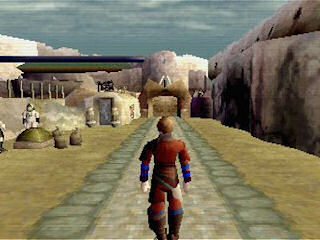 |
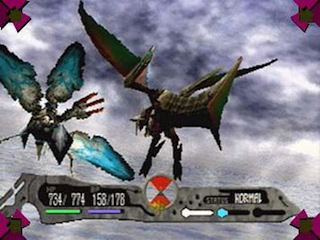 |
Panzer Dragoon Saga |
|
The game was produced in the West in limited numbers selling out thanks to rave reviews thus quickly becoming one of the most highly sought titles of all time regularly fetching prices of £150/$120 for an English language version. Fans have been clamouring for years for an updated version. Ports of the original Panzer Dragoon have been made to Xbox, PC and PS2, however, Panzer Dragoon II: Zwei is exclusive to the Saturn.
AM2
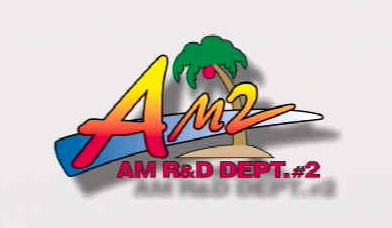
AM2 (sometimes known as AM#2) were the most impressive developers the system had and brought the arcade to the home as part of their prolific portfolio. They probably annoyed many people leaving them wondering why this internal team could produce such excellent results from a console that had been doomed by the developer community. Perhaps the only part of SEGA's image of the Saturn to materialise was AM2's vision of bringing the best of the arcades to the home, many of which were courtesy of their own AM2 dept.
The original Virtua Fighter (VF) bought 3D fighters constructed from hundreds of polygons to the traditional 1 on 1 beat'em-up and almost killed off the 2D fighter. The sequel Virtua Fighter 2 was a programming masterpiece employing the high resolution mode (the highest of any console at the time) and running at 60fps and stands as one of the best Saturn titles ever.
For much more information check out the Virtua Fighter and Virtua Fighter 2 features.
Virtua Fighter Kids was a bizarre twist on the usual VF sophistication presenting the cast in classic Japanese anime style giving them large heads and big eyes and pitching their voices high. A few gameplay tweaks were thrown in also.
Fighting Vipers (FV) is a quirky fighter also from AM2 that gave the huge combatants breakable armour, weapons and the potential of spectacularly blasting your opponent out of the arenas whether they be made of glass, fencing or elastic rope! It was the second title to utilise AM2's new 3D Operating System - the SEGA Graphics Library Version 2. A follow up was released on the Dreamcast in 2001.
In November 2012 as part of SEGA's Heritage collection, both VF2 and Fighting Vipers were released on Xbox Live Arcade and PSN getting the high definition graphics makeover and online play with the usual rewards up for grabs with Achievements and Trophies.
Fighters Megamix took characters of VF and FV along with some other AM2 games such as the Hornet car from Daytona USA and threw them into an ultimate brawler.
Graphics seemed to be improved in some areas and gameplay (essentially remaining VF/FV) was tweaked being closer to the then new Virtua Fighter 3tb employing a dodge move that allowed sidesteps to the left and right to avoid and counter. Difficulty is noticeably increased. Two characters; Bark and Bark, and two arenas; South Island and Aurora Icefield are from a rumoured/abandoned port of Sonic The Fighters (also known as Sonic Championship) are in the game.
Megamix is considered an essential title for the system especially if not owning any of the VF games with its roster of characters and fine-tuned fighting.
Alternatively check out Virtual On: Cyber Troopers for a different type of combat game which pits two gigantic robots armed with a variety of weapons against each other.
Dead or Alive, the fighting franchise from Tecmo actually started on the Saturn being ported from the arcades to SEGA's console first. In an impressive show of programming (rumoured to use the Virtua Fighter 2 engine) the port was even superior to the later Playstation version producing super smooth animation in high-resolution 704x480 mode - something very few developers utilised.
Gameplay is pretty standard with an array of distinctive moves which employs a combo scoring system and the ability to propel your opponent high up into the air when knocked out the ring. It even includes the option to adjust the breast bounce on the female characters (for 14 year-olds presumably).
This version was only released in Japan but can be found easily on Ebay. The franchise has since had several games released on numerous platforms since.
Of all the Bomberman's across all the system's, it's the Saturn version that is played by the die-hards. Not only does the game look superb thanks to the system's 2D abilities. The option of 10 simultaneous human players thanks to the support of multi-taps makes for one hell of a game! In Japan and the US, it was also enabled for online play.
It is rare in PAL format costing up to £50 for a complete copy.
Two more Bomberman games entitled Saturn Bomberman Fight! and Bomberman Wars were released in Japan only.
Exhumed also known by the name of Power Slave used a most impressive 3D engine of any 32-Bit game programmed by Lobotomy Software. The Saturn's hardware was more suited to this type of game surprising many who saw the Playstation as the only viable system for 3D gaming. When SEGA announced Quake (in which the industry said could not be done on the Saturn) and Duke Nukem 3D which is the only uncensored console version of the game and with the ability to play over the Internet via Netlink (US only), the same team was called upon. They later faded into obscurity eventually disbanding.
Alternatively checkout Alien Trilogy which was publicised by Akklaim for using only one of the Saturn's SH-2 processors and it looks and runs the same as the Playstation version barring some minor lighting effects.
From Taito is a little known game in the West entitled Elevator Action Returns that was originally released in the arcades, and is a remake of original 1983 game entitled Elevator Action, but with far superior graphics and sound.
Your character wreaks havoc on all floors of buildings as you make your way up and down using...the elevators collecting all the computer data and disarming bombs.
The focus is on shooting - and lots of it! - though plenty of enemies will need to be beaten up as well. Buildings gradually become more complex with multiple elevators.
It was one of the Saturn's quirky titles (though not bizarre) and thus typically released in Japan only. It was later included in the Taito Legends Collection 2.
The Tomb Raider franchise started life as a Saturn project. Although versions for Saturn and PSX arrived simultaneously there were never any sequels for the Saturn by instruction of the parent company Eidos. People still debate to this day which version is better.
Virtua Cop was one of AM2's most popular arcade games of the era because when released brought with it many changes to the traditional light-gun genre. The move to 3D graphics allowed the games to be more active and realistic. Enemies and objects reacted differently in the environments depending on where you shot them and with what weapon. For example, blasting someone in the arm or leg would not necessarily take them down in one shot and more points could be earned for shooting the gun out of a targets hand.
In Virtua Cop 2, Virtua City was in trouble once again. The action intensified with four new longer and tougher campaigns. This version offered improvements in the gameplay especially with selectable routes and more modes. Graphics and sound (including many voice samples) quality were also improved.
The Saturn versions, impressively looking very close to their arcade counterparts, could use a standard control pads or the light-guns and great to play in co-op mode. Though looking dated and rather quickly, the Virtua Cop games were instrumental in many of the elements found in games today. Virtua Cop games have since been released on PC, Dreamcast and Playstation 2.
The House of the Dead from SEGA's Hitmaker Studio was a new take on the genre instead blasting zombies and mutated creatures rather than criminals. Think of Resident Evil meets Virtua Cop. It was one of the first games to allow players to take multiple routes throughout a stage. At critical moments the player's action will determine where they headed. This could be failure to save a person or taking a hit from an enemy.
The Saturn version added some new gameplay modes over the arcade version. It was one of last releases for the system, somewhat rare to find. For much more information checkout The House of The Dead Feature.
The franchise since became one of SEGA's most popular and has had sequels in the arcades ported to Dreamcast, Xbox and Wii. Two movies loosely based on the games were made and released both of which flopped.
Sport and Racing
As mentioned sports games were found wanting, but racing games were very prolific and popular during this era of gaming and SEGA's arcade racers were considered the best there was. All are compatible with the racing wheel accessory.
SEGA Rally Championship was one of the hyped conversions for the system that attracted many players thanks to its pure arcade gameplay. It introduced driving on different surfaces and the aspect of drifting and still holds up as a good blast today. It was ported to PC and much later to GBA.
The sequel SEGA Rally 2 was released in the arcades and later for the Dreamcast with SEGA Rally 3 following in the arcades and other games simply titled SEGA Rally (Revo) on PC, Xbox 360 and PSP.
Daytona USA was hugely popular in the arcades debuting on the Model 2 arcade board. It was a revolution in graphics at the time that caught as many spectators as players. The port to Saturn was rushed for release and was criticised for not being very faithful to the arcade original. Three newer versions followed: Championship Circuit Edition which upgraded the graphics courtesy of the SEGA Rally Engine, Circuit Edition released in Japan only and the Netlink edition allowing play via the Internet.
Though Daytona was overtaken graphically by its peers it compensated with gameplay accessible to new gamers that was really fun to play by using loose drifting but friendly handling. It was included with the console in some locations. A revamped version was made in 2001 for the Dreamcast.
Alternatively checkout SEGA Touring Car and Wipeout 2097.
2D Abilities
As you may have read, the Saturn was designed primarily for 2D games and as such has immense abilities in that department. The two genres that burgeoned were shoot'em-ups (schmups) and beat'em-ups (fighting) and typically very few of these were released outside of Japan. These games primarily came from Capcom and SNK who seemed to have great love for the machine. Both of these genres later found homes on the Dreamcast and unsurprisingly by the same companies.
Fans of both genres joyfully snap up Saturn consoles in order to build their collections. Across the internet you will find support for the Saturn being the best console for the genre(s) of the hardcore of gamers.
Shooter Satisfaction (2D Shooters)/ Shoot'em Ups /Schmups
Shooters make for some of the best and rarest games in the system's library. Saturn and Playstation share a few shooters, but Saturn versions are always superior.
Perhaps the most well known is prestigious Radiant Silvergun from revered development house Treasure; a game that frequently tops everyone's favourite shooter of all time list. Some suggest it's over hyped but there is no question how it was a modern take on an old genre and represented one of Treasure's few forays into the arcades. It was released in 1998 to an almost dead Saturn market where it became a legend often hailed as a masterpiece of vertical shooter perfection.
You play one of a group of rebels who have witnessed the destruction of Earth by an ancient object of extraordinary power. The journey begins back through time to restore the planet.
What made Radiant Silvergun different was its concept of no power-ups to take down the ever increasing size of enemies, instead opting for a selection of weapons where one would be more effective at a specific point, nor was it a typical few stages of quick intense action. The entire game takes some 2 hours with intricate stage design that combined a scoring system that unlocked special options with the more points scored. A tough challenge and 2-Player co-op completes the package.
Though being a 2D shooter it combined 3D graphics for the gigantic bosses and is another demonstration of what the Saturn could do in the correct hands.
Nobody in the West wanted to pick this title up for conversion leading it to become one of the most expensive but sought after imports you can find.
In 2011 it was ported to Xbox Live Arcade with a high definition make over amongst other improvements.
A spiritual sequel Ikaruga was released in 2002 in the arcades and Dreamcast with ports to Gamecube and Xbox Live Arcade.
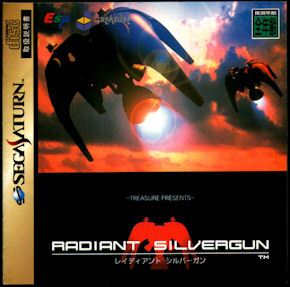 |
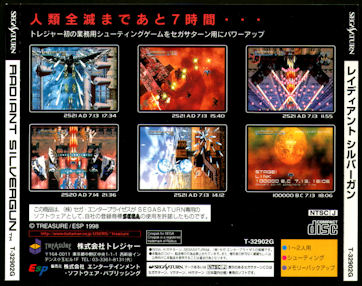 |
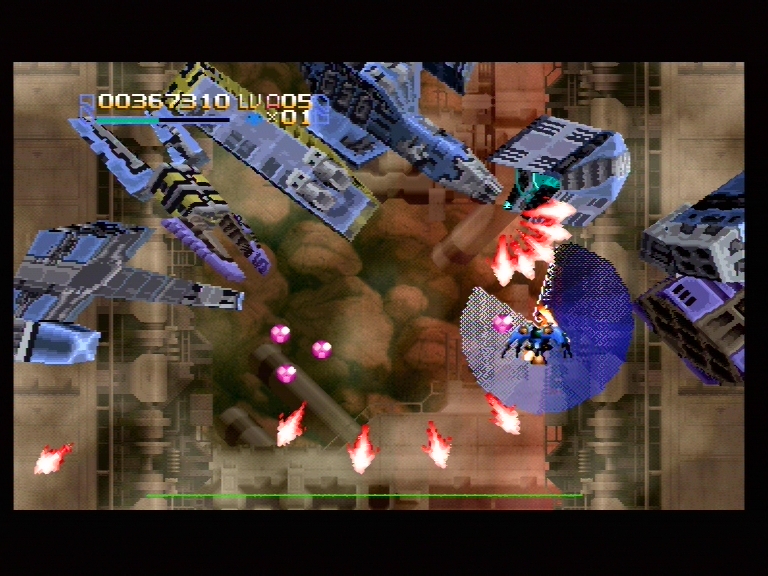 |
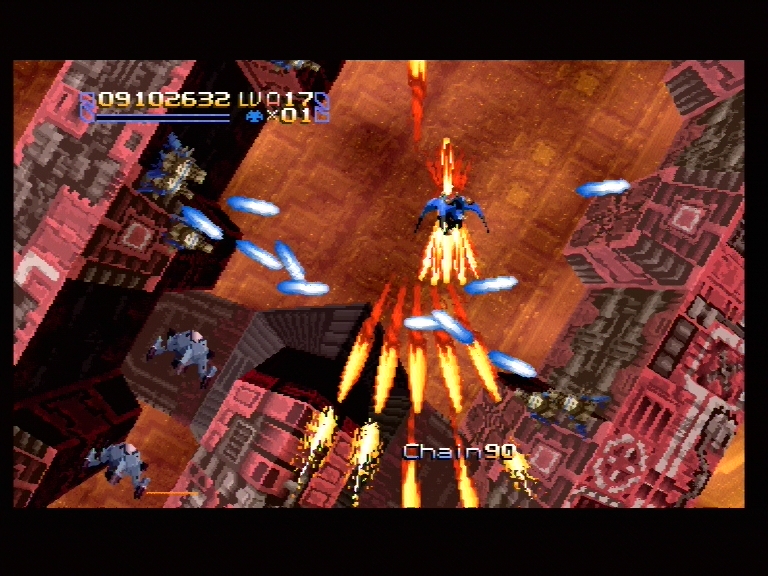 |
The esteemed Battle Garegga created by Raizing (of Soukyugurentai fame) and published surprisingly by Electronic Arts in Japan only and again in 1998 - is a traditional warplane vertical shooter. In the hangar there are 4 planes each with their own strengths and weaknesses; some are slower with more firepower and vice-versa.
It became a Saturn favourite through its pure arcade gameplay with power-ups and a scoring system that required no misses collecting emblems as well as a tough challenge. Graphics are nicely detailed and saw little slow down even when the screen was filled with hundreds of sprites and the huge bosses. 2-Player co-op mode completes the package.
This is another highly collectible title with prices around £80 on Ebay or specialist shops. A demo of the game was included in the 2nd release of Soukyugurentai - another favourite - and a sequel Battle Bakraid was released in 1999 in the arcades.
My Top 10 Shooters
There is a massive volume of 2D shooters on the Saturn and whilst this list is more of personal favourites, there are frequently spreads regarding the shoot'em-ups on the system in many retro magazines typically containing the same entries.
Radiant Silvergun
Soukyugurentai Otokuyo (Terra Diver)
Battle Garregga
Strikers 1945
Sonic Wings Special
Layer Section
Shinryu
Do Don Pachi / Don Pachi
Guardian Force
Batsugun
For more info on any of the games listed check out http://www.shmups.com/.
Metal Slug (Super Vehicle-001) from SNK had become a massive hit in the arcades with its frantic run'n'gun action, cartoon style visuals and impressive animation. The home version on the Neo Geo AES console cost hundreds of pounds/dollars due to the capacity of the cartridge.
The Saturn and the inherent use of CDROM could produce the game much more affordable game and was a prime candidate for conversion, the result of which was pretty exacting. Enhancements included Combat School with gameplay modes that had unlimited ammo and weapons and an art gallery.
The series is one of the longest lasting through the console generations to have seven main titles in total so far and several hand-held spin offs. Metal Slug on the Saturn has become one of the most collectible titles especially when bundled with the RAM cart as it was also never released outside Japan. Expect to pay at least a £100.
Fighting Spirit (2D Fighters)
The integral aspect to the Saturn's library is the huge selection of 2D fighters from a variety of publishers. Street Fighter Zero (Alpha) series, The King of Fighters series and Waku Waku 7 are examples.
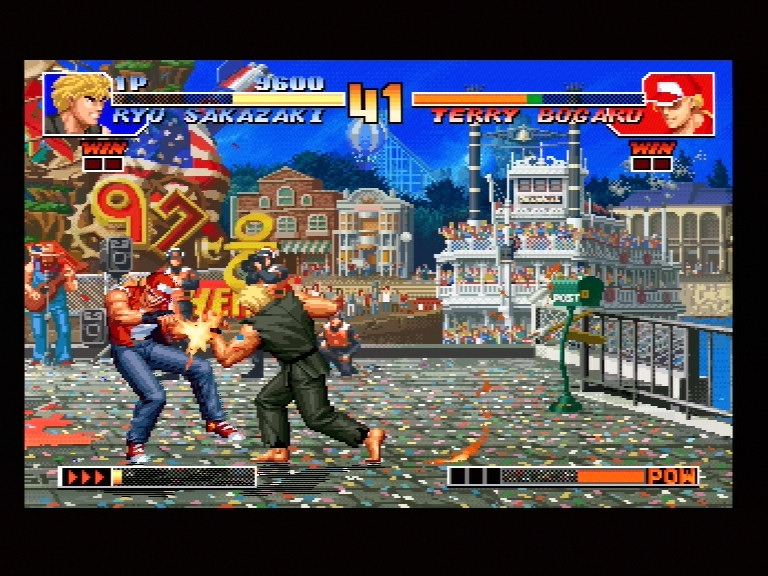 |
The King of Fighters '97 |
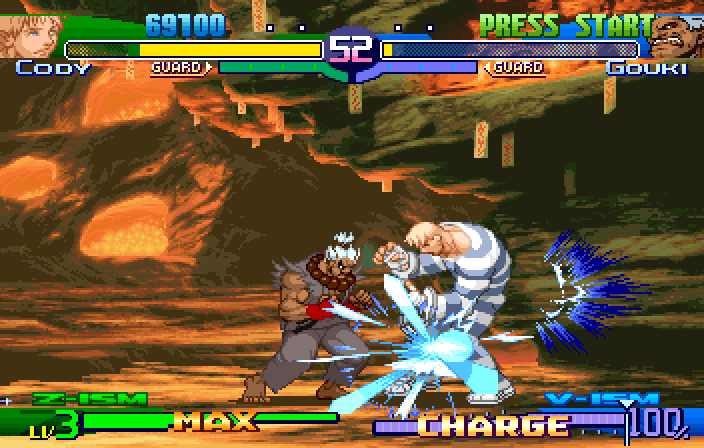 |
Street Fighter Zero 3 |
Such a rivalry between the players of The King of Fighters and Street Fighter existed that it ultimately lead to the creation of the Capcom vs SNK series several years later.
The extra RAM afforded by the RAM expansion cartridge(s) allowed for improved graphics and far less loading. This meant the Saturn could run practically arcade perfect ports of the hottest 2D fighters of the generation whereas the Playstation suffered crippled versions or nothing at all. Not only this, but the standard Saturn controller is hailed as the best for 2D games with more responsive D-Pad and intuitive layout or even the fully fledged arcade stick. Unfortunately, the only game of this ilk released outside of Japan was The King Of Fighters '95 with a 1MB RAM expansion cartridge.
Vampire Saviour / Darkstalkers is the third game in Capcom's Darkstalkers series which has the reputation of being just Street Fighter with monsters, but adds a few twists to innovate the genre. Instead of the typical best of 3 instead where each character has two life bars, when one is drained, the character falls down, refills, and the match continues. The Dark Force Power-Up affects each character differently such as getting armour or mirror images of themselves. Throw in some insane special moves and it makes for a pretty fun game.
It was the second of which to utilise the 4MB RAM cartridge and the results are a near perfect arcade conversion with very little load time, lots of frames of animation on the characters and detailed backgrounds.
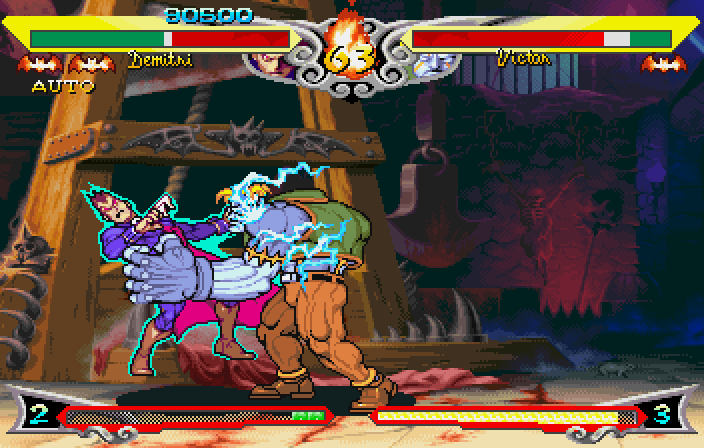
Vampire Savior: The Lord of Vampire / Darkstalkers 3
Requiring the RAM expansion, it was only released in Japan. Interestingly, whilst a good amount of the game is in English, Capcom created a code to make the game be entirely in English so they had considered the potential import market.
The previous game in the series, Night Warriors: Dark Stalkers Revenge / Vampire Hunter: Darkstalkers' Revenge was released in the US and Europe and did not require the RAM expansion.
2D Fighters (Extra RAM Titles)
Street Fighter Alpha 2
Street Fighter Alpha 3
The King of Fighters 95,96,97
Xmen Children of the Atom
Xmen Vs Street Fighter
Vampire Saviour/Darkstalkers
Golden Axe: The Duel was based upon the characters of the classic Golden Axe franchise and pitched them in a 1 on 1 beat'em-up arena. It has huge characters and is a decent fighter but unfortunately lacks and meaningful depth. At the time of its release there were just too many better fighters on the market (especially for the Saturn) and SEGA bastardising yet another one of its favourite franchises didn't sit well with fans. They would have been better off releasing Golden Axe: The Revenge of Death Adder from the arcades instead.
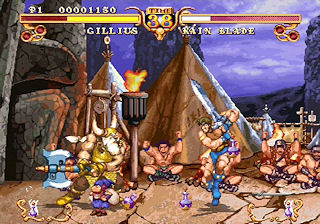 |
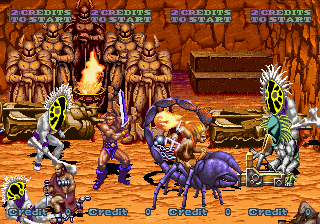 |
Golden Axe: The Duel |
Golden Axe II: The Revenge of Death Adder (Arcade) - Click for feature... |
Updates to the established Mortal Kombat (MK) franchise were Ultimate MK3 and MK Trilogy both of which benefit from the Saturn's 2D abilities with clearer sprites and better animation in both character and backgrounds.
As the Saturn was not blessed with support from SquareSoft, the RPG genre is a little disparate, however, there are some truly excellent titles for the RPG gamer to enjoy.
Shining Force III was to be the last from Camelot Software Planning before they moved to Nintendo projects after a run of popular titles on the Game Gear, Mega Drive/Genesis and Mega-CD/SEGA CD. Fans of the series were treated with a slew of titles on the Saturn and Shining Force III stayed rooted to the 16-Bit games but managed to make good use of the Saturn's 3D features generating some rich environments.
Only 1 English version made it out of Japan which is sad because there are actually three other scenario games - but you will need to know Japanese.
An innovative RPG from Game Arts was a surprising entry into the fray. That game was Grandia. Not only did reviews rank it higher than Final Fantasy 7 (and still some claim it is the best RPG to this day) but it made impressive use of the Saturn's notoriously difficult hardware producing some of the finest visuals seen. Each environment is presented in real-time 3D from an overhead perspective and painstakingly textured.
Unfortunately the game was only released in Japan. SEGA fans upon hearing the rave reviews wanted a translation but the cost simply did not justify any possible return. There was an English port for Playstation and those wanting to play the game simply got that version. Reportedly it can be played with little Japanese knowledge. A sequel was released on the Dreamcast in all territories in 2000 and there was a port to PS2.
Also from Game Arts were re-releases of their huge selling Mega-CD/SEGA CD titles; Lunar and Lunar 2: Eternal Blue entitled Silver Star Story Complete. Two versions were released. The first in 1996, and a 2nd, even better one in 1997 but these were in Japanese only unlike their 16-Bit predecessors and the reason for this is an event in SEGA's history that probably dealt a fatal blow to the fortunes of the Saturn.
Alternately check out and Dragon Force, Shining the Holy Ark and Legend of Eldean.
A fair amount of the system's puzzle genre was presented in 2D. Worthy titles to check out include Bust-A-Move 2 showing a marked superiority over the Playstation version and Super Puzzle Fighter II Turbo that has the characters from Street Fighter inflicting blows on each other as players match up coloured diamonds in configuration.
In total some 1000 were games produced for the console which is odd considering the issues surrounding development. The final release on the system was Yuukyuu Gensoukyoku Hozonban Perpetual Collection in December 2000 in Japan only.
In January 2001 when SEGA announced that they were to become a third-party developer only it was hinted at by SEGA that some of the classic Saturn titles would make reappearance on Playstation. Nothing ever surfaced but now some of the original titles were re-released under the banner of SEGA Ages Series for Playstation 2.
In 2010 following the intended releases of Dreamcast ports to Xbox Live Arcade, SEGA commented on the possibility of some Saturn classics making an appearance and as of 2012 iconic titles Guardian Heroes, Radiant Silvergun and NiGHTS Into Dreams have been released.
Import Scene
The reluctance of SoJ to release the niche and arguably the system's best games outside of Japan forced people to import creating a buzzing import market in the mid-90's that created a community that pretty much took care of itself.
Importing games was done by a small minority but even many branches of high street chain Computer Exchange stocked imported games. It continued for several years after the system was discontinued and this scene was a catalyst for people importing Dreamcast's.
Development Environment
As mentioned earlier, the programming skills needed to get the best out of the machine were in short supply. Programming for multiple CPUs was not widespread practice at the time. Many developers eventually became content to utilise only one of the system's CPU's and VDP's automatically crippling whatever they wished to produce. This gave the Saturn a severe disadvantage for any comparison against rivals.
Developers have commented that it got developers thinking about parallel processing for the first time and the shift to that is benefiting the games we have today.
32X Backwards Compatibility It was a common rumour and misconception at the time that the Saturn would be backwards compatible with the 32X given that they share the same central CPU's and has a cartridge slot. This was not the case. The Saturn is not backwards compatible with anything. It is much more than simply just a 32X with a CDROM drive. Such an adaptor was hinted at but really only existed in the minds of the hopeful.
Homebrew Scene
The last few years have yielded some healthy development. The field had been almost non-existent due to the complex nature of development for the system if not for some talented people creating tools and development environments. Now there are annual competitions where programmers submit a wide range of projects.
Many examples can be found at: http://www.racketboy.com/retro/SEGA/saturn/2008/04/the-state-of-SEGA-saturn-homebrew.html
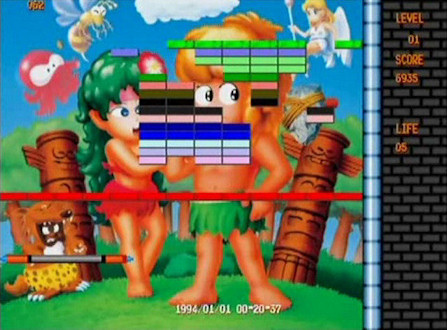
Giganoid - Saturn Homebrew Title
For much more information about programming the Saturn and advanced topics check out SEGAxtreme and http://SEGA-saturn.dcemu.co.uk/.
Get Off My Case#4
More case calamity. The first versions of the European cases were of poor design being two pieces of plastic with very thin card glued across them on which the game art is printed. They broke and ripped very easily with no hope of replacement. On the shelf, when compared to the sleek PSX games they just looked crap. SEGA introduced a new tougher plastic version much like a DVD case with a wallet to contain a slip for the game art. These were much more durable but still irreplaceable.
In the US games came in the large almost VHS sized plastic cases (remember those?) they used for the SEGA CD games. These could not be easily replaced if broken.
Japanese games were supplied in the standard CD jewel case that could be replaced easily and at a tiny cost.
European Game Flyers Gallery
These are some of the flyers that were distributed along with the games for promotional purposes.
Click on any of the images for larger versions.
Saturn 1 - Side A |
||||
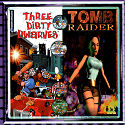 |
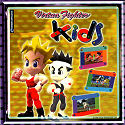 |
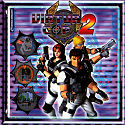 |
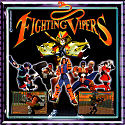 |
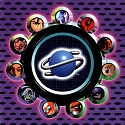 |
Saturn 1 - Side B |
||||
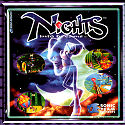 |
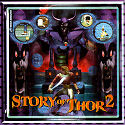 |
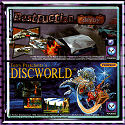 |
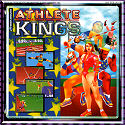 |
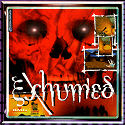 |
Saturn 2 - Side A |
||||
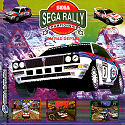 |
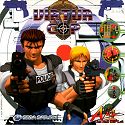 |
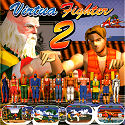 |
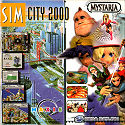 |
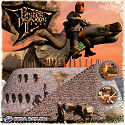 |
Saturn 2 - Side B |
||||
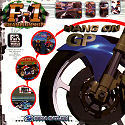 |
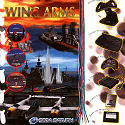 |
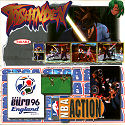 |
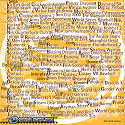 |
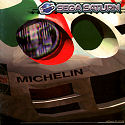 |
Saturn 3 - Side A |
||||
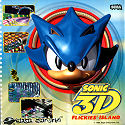 |
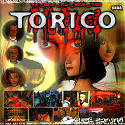 |
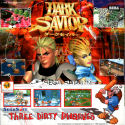 |
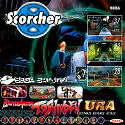 |
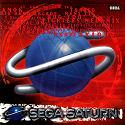 |
Saturn 3 - Side B |
||||
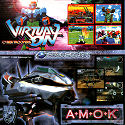 |
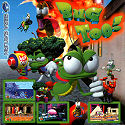 |
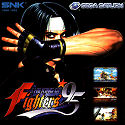 |
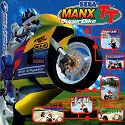 |
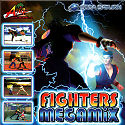 |
Saturn 4 - Side A |
||||
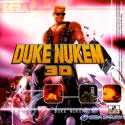 |
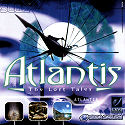 |
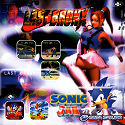 |
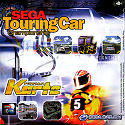 |
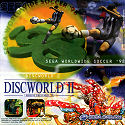 |
Saturn 4 - Side B |
||||
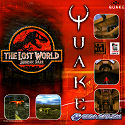 |
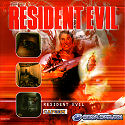 |
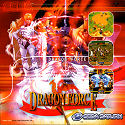 |
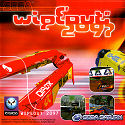 |
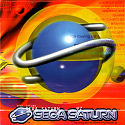 |
Saturn 5 - Side A |
||||
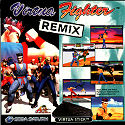 |
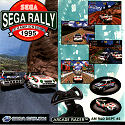 |
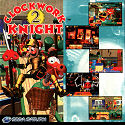 |
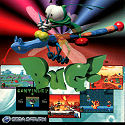 |
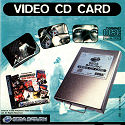 |
Saturn 5 - Side B |
||||
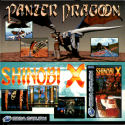 |
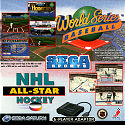 |
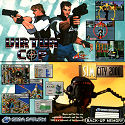 |
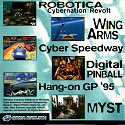 |
 |
Saturn History X: Never Released
Some of the Saturn's lost games would make a SEGA fan recoil in horror. Taking into account there was no Streets of Rage game (another of their best 16-Bit franchises) nor an update as such to Golden Axe (a port of the arcade version of Golden Axe 2 perhaps) there are more games that if released could have made a big difference.
Sonic Xtreme - The missing Sonic game...again like the 32X. Probably the most famously troubled dead Saturn project, it was to be an original game that ideally should have shipped with the system from the start as it was designed to showcase the system's power.
Set to be the first truly 3D Sonic game it was being developed by SEGA Technical Institute in the US whereas Sonic Team back in Japan were working on NiGHTS and did not help. It struggled under an insane development schedule and at one point even having two different 3D engines, one of which was a radical new fish-eye lense.
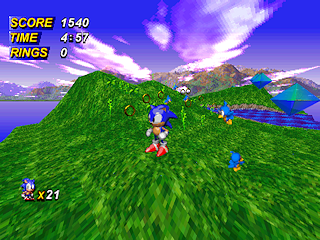 |
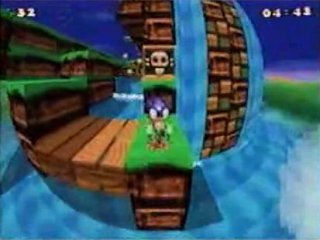 |
Sonic X-Treme - NiGHTS Engine |
Sonic X-Treme - Fisheye Engine |
The story in itself is a dramatic chapter in SEGA's history. There is nothing to say that the game could have saved the Saturn but not having any traditional Sonic games was pretty ridiculous. The planned PC version is said to be more complete.
Virtua Fighter 3 - When debuted, it became a measure for all other fighting games with its breathtaking graphics courtesy of the new Model 3 arcade board and the gameplay becoming the basis for other fighters. There were rumours, statements of support from AM#2 and statements of denial pending the Saturn version. SEGA promised a port and it frequently appeared on their release schedule though it was delayed and then eventually vanished.
What people did not know was a downgraded (it was obvious that the Saturn was never going to be able to recreate the arcade version) but an otherwise 100% completed game was ready to be mass produced but SoJ refused to release it at the last second in September '98 with the notion that this 32-Bit version could impact the upcoming Dreamcast version that was to be released a months later. Bear in mind Saturn was still a popular console in Japan. As a result many went to Tekken during the time VF3 was ready for the Dreamcast and only some gamers came back.
There has never been any official footage or screenshots. Some buggy screenshots purporting to be the Saturn version have been posted but have been proven to be from MAME running the arcade version.
Contrary to popular opinion the Saturn VF3 did not require the 4MB RAM cartridge or any other upgrade cartridge to enhance 3D processing.
Shenmue - Yu Suzuki's pet project actually began life on the Saturn before ending up on Dreamcast instead.
The releases of Shenmue II actually contain video footage of an early Shenmue demo running on the Saturn showing some of the best graphics ever produced by the system. It's rather impressive considering the 3D abilities of the console but if there was team to make a good attempt it would be AM#2. These videos have since become available on YouTube.
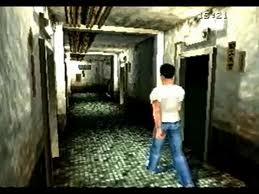
Shenmue running on Saturn
Sonic Championship aka Sonic The Fighters - talk had been thrown around about the only Sonic beat'em-up to be created was being ported to the Saturn but this did not happen simply because there was not enough market to justify it. Interestingly some elements appear in Fighters Megamix so it is possible that some very limited development was done.
It has since been ported to the Gamecube and PS2 as part of the Sonic Gems Collection and released on Xbox Live Arcade and PSN in November 2012. For more information on the game check out the Sonic The Fighters Feature.
Eternal Champions - had a following in the US and the third instalment was planned to not only tie up things presented in the SEGA CD/Mega CD version but was to employ a much more elaborate fighting engine. The order to cancel the game came directly from SoJ as Virtua Fighter was to be the token brawler on the system. It is not clear how far the development process went with this title...
Resident Evil 2 - The original version was canned for both Saturn and Playstation due to various issues despite being some 85% complete. It's referred to as Resident Evil 1.5 and plenty of footage is available online. The Playstation rewrite of the game was to be released first and by the time work was to begin on the Saturn version some 12 months later the console was effectively dead so Capcom canned the release.
Legacy of Kain: Blood Omen - An RPG game that planned to utilise the inherent advantages of CDROM more than most. The Playstation game despite crippling load times got rave reviews. The Saturn version was stated by its creators to be the superior of the two utilising the system's high-end 2D abilities and better loading times afforded by the system's design. It was scrapped by Eidos (likewise with Tomb Raider sequels) as they wanted efforts focused towards Playstation.
Lunar Silver Star Story Complete - The planned Western release of Lunar was derailed as a result of a very infamous and public feud between SoA's then President Bernie Stolar and Working Designs President Victor Ireland at E3 who were one of the most active Mega CD/SEGA CD and Saturn publishers translating Japanese RPG's and keen to publish an array of titles. The result was no English translations and Lunar, along with other titles, would never appear on Saturn and subsequently went to Playstation.
GALLERY
If you would like to nominate a game to appear here I'll be happy to add it!
Collecting Rarities
Generally PAL games can be found for anywhere between £3 and £20 complete. Some of the rarer releases will cost upwards of £20. Expect to pay around £10-£25 for a typical imported game. The most rare/sought after titles can cost between £50 and £150 but this is only a handful.
The latest PAL releases cost the most with the rarest entitled Deep Fear costing around £100 along with Mr Bones. In order of less expense will be Keio Flying Squadron 2, Three Dirty Dwarfs and Whizz.
EMULATION
It has often been said that the emulation of the Saturn would be impossible due to the complex design of the machine but this has been overcome to a very good extent.
Emulation of the console has proven a significant challenge for programmers and SEGA themselves have very limited use of such an emulator and used it as part of a download service in Japan only. Hence the reason why there are so few Saturn 'classics' released as it requires a complete port of the game unlike compilation titles of the Mega Drive/Genesis which can use an emulator.
For more information and downloads check out the Saturn Emulators page.
Found Elsewhere
The following Saturn games can be found on other platforms:
Panzer Dragoon - PC, Xbox, PS2
Virtua Fighter - PC
Virtua Fighter 2 - PC, PS2
Last Bronx - PC PS2
Bug! - PC
SEGA Rally - PC, GBA
Daytona USA - PC, Dreamcast
The House Of The Dead - PC
Models Gallery
As with other SEGA consoles there are several versions of the Saturn for different markets some of which were not manufactured by SEGA. As yet there has not been any retro re-releases of the Saturn unlike the Mega Drive/Genesis.
 |
European Logo |
 |
American Logo |
 |
Japanese Logo |
There were 2 versions or models of the standard machine released in the US, Japan and Europe. The differences between Model 1 Saturn's and Model 2 Saturn's are relatively minor. Model 1's have oval buttons and Model 2's have rounded buttons with some highlighting in the plastic. Internally there are revisions to the motherboard and differences around the CDROM drive. These total the four standard models.
Apart from the usual voltage and TV system differences, the main difference between a Japanese and US/European machine is the colour of the casing; Japanese models were grey for a Model 1 or white for a Model 2 whereas the US/European versions were all jet black.
Model 1 Saturn's in US and Europe shipped with the 'squarer' less comfortable controller whereas their Japanese counterpart shipped with the better rounded version. These pads were later included with the Model 2 machines in US and Europe.
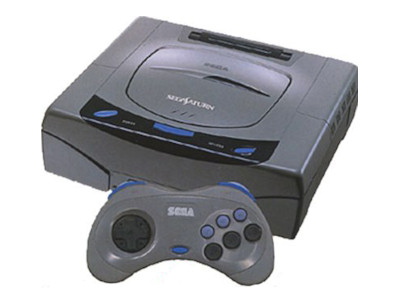 Japanese Model 1 |
Grey console with blue oval buttons. Has a BIOS version of 1.00/1.01. Models: HST-0001 and HST-0004 (HST-0005) |
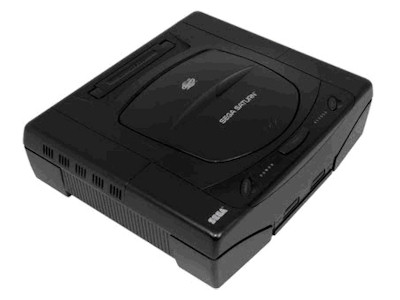 European/US Model 1 |
Black console with the black oval buttons. Has a BIOS version of Version 1.01. They were supplied with the horrid more squared version of the standard controller. |
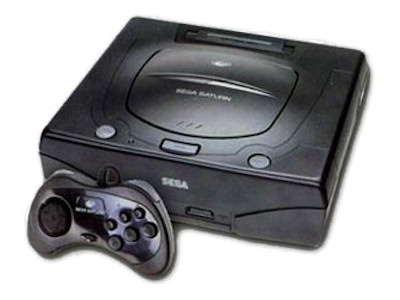 European/US Model Model 2 |
Black console with more circular buttons which are grey with a slightly different highlighting mark in the plastic. These have a BIOS version of 1.01a. Came with the much improved Japanese version of the standard controller. Model MK-80200-50 |
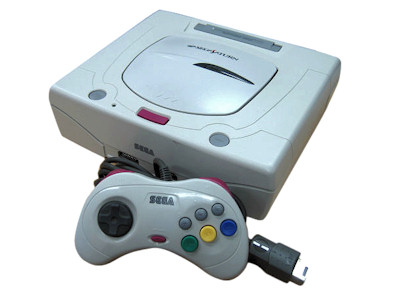 Japanese Model 2 |
White console with more circular buttons which are grey and a red button for the flip lid. Has a BIOS version of 1.01. |
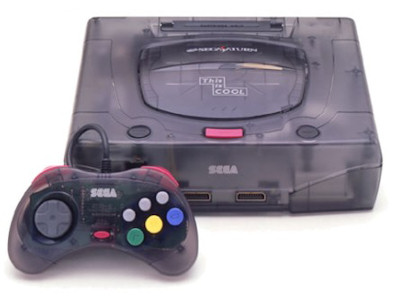 Skeleton Saturn/Transparent Saturn "This is Cool" (HST-0020)/Derby |
These were the last models to be produced are therefore quite rare and collectible. They were created by SEGA in very limited numbers for promotional purposes only but some of them found their way onto the market. These Saturn's occasionally pop-up on Ebay and prices start at about £150. The case is translucent smoky grey as is the controller with "This is Cool" printed on the CD lid and controllers. They are identical to the Japanese Model 2 but are known to have some compatibility issues with Space Harrier and Metal Slug. Later they were released in a very limited amount packaged with ASCII's Derby Stallion Saturn title. That version does not have "This is Cool" on the casing. |
Officially Licensed Saturn's
These are more specialised versions that were licensed by SEGA but not manufactured by them.
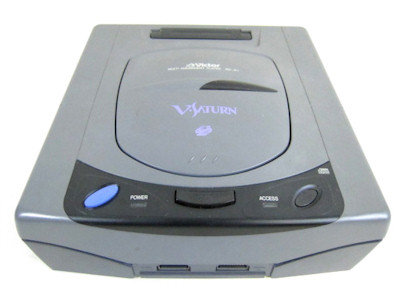 JVC/Victor V-Saturn RG-JX1 (Model 1) 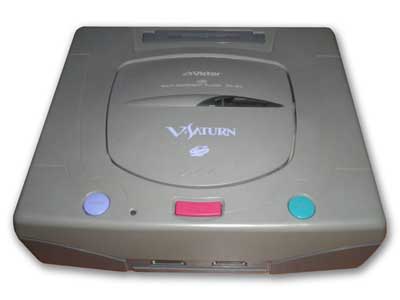 JVC/Victor V-Saturn RG-JX2 (Model 2) |
Two models manufactured by JVC. They follow the same two designs as SEGA's models but have several internal differences. The boot sequence creates a VSaturn logo rather than SEGA Saturn. |
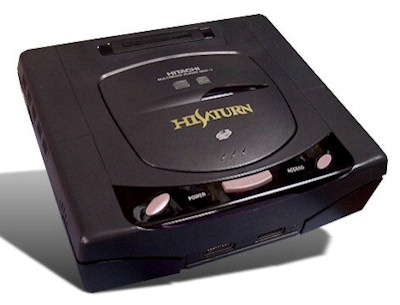 Hi-Saturn (Model 1) MMP-1 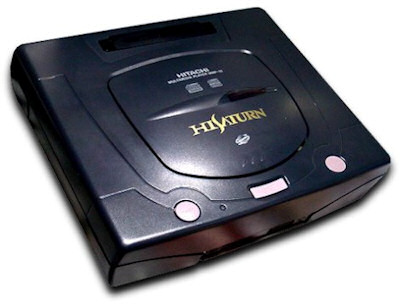 Hi-Saturn (Model 2) MMP-11 |
From Hitachi, these Saturn's came with the bonus of MPEG cards included. When booted up they display a Hi-Saturn logo. |
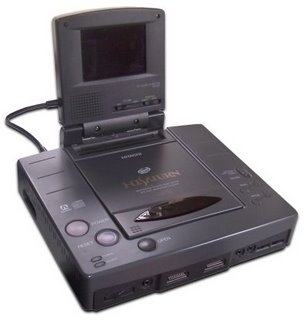 Hi-Saturn Navi (MMP-1000NV) |
This was manufactured by Hitachi and released in 1995 with a launch price of about $1450 and is the most interesting. It has an extensive feature list including built-in GPS and has an optional add-on LCD screen. A full breakdown of the machine can be found at [http://nfg.2y.net/games/saturn] Whilst not the rarest it is the most costly at around £400 should you find one. |
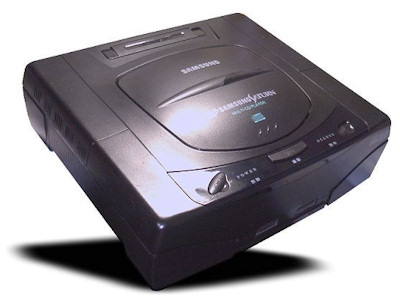 SamsungSaturn |
It was manufactured under licence from SEGA exclusively for the Korean market. It is essentially a Model 1 having the oval buttons on the outside with Samsung on the casing, however, it uses the motherboard for a Model 2. This produces a few quirks. For example, the reset button is not connected and there are labels on the casing for the CD access light but no LED connected. The Japanese language option has been removed from the BIOS and there is no Korean option added either. The controller is identical to the standard Model 2 controller except for Samsung on the casing. Much More detail can be found at : http://info.sonicretro.org/SEGA_Saturn_Models#Grey_Japanese_Saturn |
Maintaining Your Saturn Console
With a little house keeping your Saturn will to continue to perform for many many years.
Battery
If your Saturn looses all of your saves then the internal battery is flat. This is simply a CR2032 or coin cell battery and can be bought from electronic shops or Ebay.
Laser Death
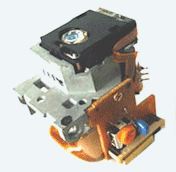
JVC Optima 6S/150S
So your Saturn unit has lasted over 10 years (of constant use no doubt) and starting to have trouble playing/loading games. Your laser has probably or about to burn out. You can try cleaning it, or messing with the potentiometers (pots) on the board but replacing the laser is a simple enough task and will keep your favourite console alive another 10 years.
You will need a JVC Optima 6s/150s Optical Head. This is identical to the manufactured part in the machine. Simply swap. Nothing else needed. These can be purchased from electrical engineers stores for under £20 or on Ebay.
You will need a JVC Optima 6s/150s Optical Head. This is identical to the manufactured part in the machine. Simply swap. Nothing else needed. These can be purchased from electrical engineers stores such as http://www.vaselectronics.com and http://www.chsinteractive.co.uk/ for around £20 or there are frequent listings on Ebay.
Modding, Booting and Burning
Any game, derived from a copy of an original or created using downloaded image files will not boot on a Saturn console without a mod chip. It will only read any CD audio tracks. The Saturn uses a very basic but highly effective method of copy protection that has yet to be beaten! It involves the thin reflective ring at the outer edge of discs.
Booting CD-R's
It is possible to boot games burnt on CD-Rs without the use of a mod chip via the infamous Swap Trick Method, however doing so is very tricky, annoying and you will eventually end up damaging your console.
Many videos of the trick can be found on Youtube.
The Mod Chip
Installing a mod chip is becoming more widespread since the original games (especially their media) are beginning to disappear and the homebrew scene has developed further.
Before buying a chip you must first determine whether your Saturn is of a 20-pin or 21-pin variety. The Mod chips for the 20-pin versions are rather rare and tricky to install. There are no reliable ways to determine which machine you have without taking your Saturn apart. Simply count the number of pins on the white ribbon cable connecting the CD drive to the mainboard.
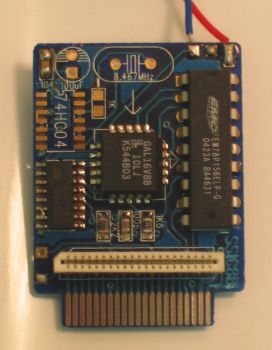
Mod Chip
The mod can be fitted to a machine from any region; however, this does not defeat the region checking so games foreign to your console are still unplayable. This can be overcome with the use of an Action Replay/Universal Adaptor device that adds the correct region code to the game before loading.
The chip is in somewhat scarce these days, though if you do locate one it will most likely be the version for Model 2 console (circular buttons) which has 20-pin interface and ribbon cable for the CDROM. The Model 1 console (oval buttons) has a 21-pin interface and ribbon cable. Chips generally cost around £20.
For 21 pin machines, the mod is much more compatible, reliable and easier to install. You can obtain one of these from and view an installation guide at: http://racketboy.com/store/sega-saturn/sega-saturn-modchip.html.
The chip itself is a tricky install requiring soldering onto one of the chips on the CDROM board.
Burning Games
In this burning guide I will be making sweeping references to the objects involved and not instructions to any specific program. You will have to interpolate/adapt the instructions to your chosen application assuming you know it reasonably well.
The procedures for burning Mega CD/SEGA CD/32X games are the same though a mod chip is not required.
Some of the steps below can be skipped where necessary, however, be warned it can be a complicated process. If you run into problems then there are many videos on Youtube describing the various methods.
A summary the process is as follows:
1. Ensure your burning program supports the type of image file you have.
2. Convert region of the game if necessary. Utilities may be required to do this.
3. Convert the audio tracks to .WAV if your burning program does not support MP3/OGG/FLAC. You may need another utility to do this.
4. Make a .CUE file with SEGA Cue Maker if your burning program does not create Mixed Mode CDROMs.
5. Burn at 8x speed maximum but slower preferred.
If you are lucky, your game will be in a single image file that your burning program can simply write to a disc and most of this guide will not be necessary.
Before embarking, be sure that you are using good quality media such as Verbatim, Intenso or Taiyo Yuden. It will reduce the risk of read errors which may prevent the game from booting at all. No CDRW's can be used. After experience this will save you many hours in the long run.
Prepare the Data Track
For exact copies you can simply use any burning software to create duplicates of an original, though you will still need a mod chip to play it. Be sure to select Disc Copy or Exact Copy, or words to that effect. You cannot simply drag the files off the CD onto another CD since the boot sector will not be copied. This is where Imaging enters the mix with image files such as .ISO, .BIN and .IMG. There are many types; some standard and some native to burning programs. For example, Nero has its own .NRG files.
Cue sheets, .CUE files, are text files that simply instruct a burning program what files to burn and where so it could be considered a type of image file but it has to be used with the files it refers to. They are also very widely accepted. However, the files it is referring to must be compatible with your burning program.
Changing the Games Region
Before setting for up burning, you need to consider if it is necessary to change the country/region setting for the game. If you have made an exact copy then this will not have changed. If playing a game foreign to your console (such as a Japanese game on a European console) you will need to change the region of the game itself or use an Action Replay or similar device to get past this.
Changing the region will involve patching the image file.
To change the country code of a Saturn game, the simplest method is to use a program called Saturn Region Converter available from: http://madroms.satakore.com/#SRP It will operate on possibly all image formats.
You simply select your image file and patch with the correct letter to determine the country.
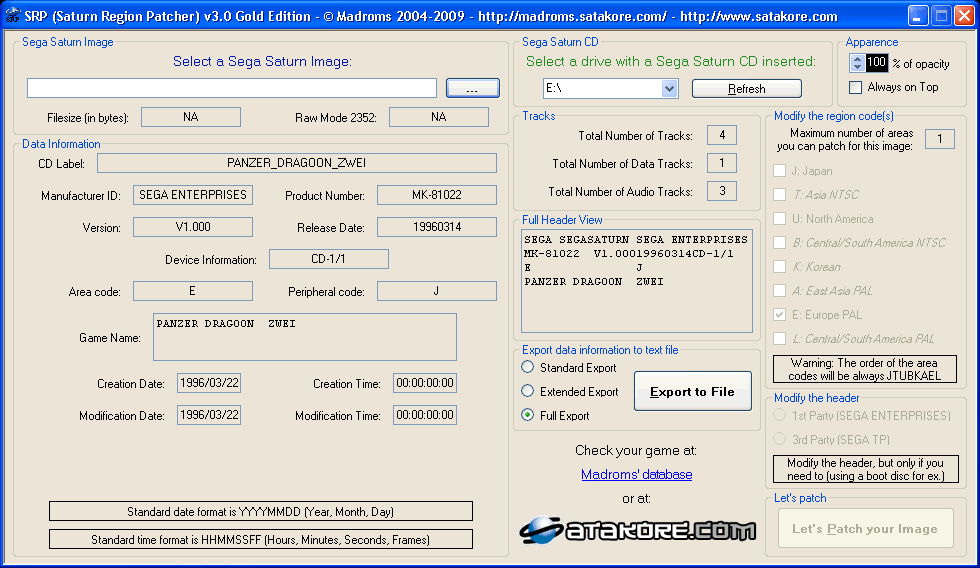
Saturn Region Patcher
To change the country code of a Mega CD/SEGA CD game use a program called ConvSCD (Version 1.10) available at: http://www.retrodev.com/convscd.html. It is a command prompt utility and at the moment only operates on .ISO images. A tip is to copy the image you want to modify into the folder where you have stored the program.
Alternatively there is scdconv (Version 2.50) available from http://www.eidolons-inn.net/tiki-index.php
Compatibility of Utilities
Note these command line utilities are DOS and as such will not execute on a PC running a 64-Bit version of Windows. You will need to use a DOS emulator such as DOSBox in order to use them.
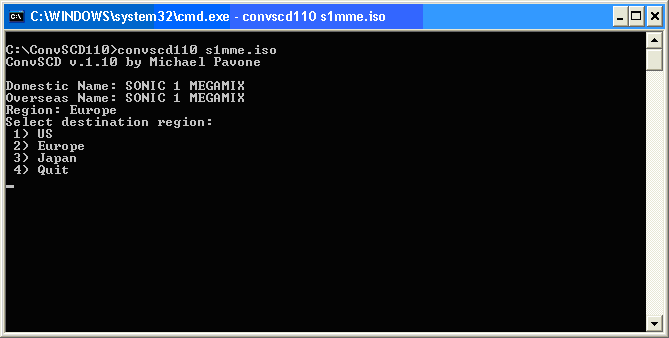
ConvSCD110
After selection a new .ISO will be written. If your image file is not in a format these programs require then another utility to convert between the image file you have to one these programs can operate on will be required. There are a large amount of these programs out there. An example is MagicISO available at: http://www.magiciso.com/index.htm.
Rather than converting between different types of disc image files, sometimes it's easier to get a trial version of the program that matches your image file if you only intend to produce a few discs. Be warned that having multiple burning programs can cause issues.
The Saturn, unlike the Mega CD/SEGA CD, does not have PAL/NTSC framerate checking, so there is no need to worry if a certain game on PAL won't work on NTSC after conversion.
Prepare Audio Tracks
The audio tracks will be the music for the game. It is possible the game will have none.
Again, they can be supplied in numerous formats such as .WAV, .MP3, .OGG or FLAC. The most compatible will be .WAV so it maybe necessary to convert each file to this format. There will be numerous utilities that can do this. An example program to do this is Goldwave available at: [http://www.goldwave.com].
Building Phase
Now that you have an image file for the data track (usually Track 1) and possibly several files for CD audio (Track 2 and beyond), it is now time to build the CDROM.
Games are usually burnt as Mixed Mode CDROM also known as Enhanced CD, CD Extra and CD Plus. Games which have no CD Audio can be CDROM ISO Level 1. No Mixed Mode is required.
The following are the most common image formats where combined with audio.
ISO+MP3/WAV - The data for the game will be stored in the .ISO file, the contents of which can be examined with programs such as ISOBuster and WinRar/Winzip as it is a standard. Audio tracks come as separate MP3 files or WAV files.
BIN+CUE - The .BIN file contains the image of the entire CD (data and audio) and as a result the .bin file can be very large but offers higher quality audio. The .CUE specifies where in the .BIN and then the individual audio tracks are.
IMG/RAW - Similar to above. It is a complete image of a disc.
Ideally, this can be done using your favourite burning program (Nero, Alcohol etc), you will need to create a Mixed Mode (Data+Audio) CDROM with ISO Level 1. Use the image file for Track 1 and the audio files for subsequent audio tracks.
Unfortunately, some programs are not particularly flexible with their ability to make Mixed Mode discs. To that end a small utility called SEGA Cue Maker can be downloaded from Racketboy which will produce a Cue Sheet (.CUE file) from your individual track files. Be sure to save any .CUE files in the same folder as the files that will make up the tracks on the CDROM.
Ideally you can just burn your .CUE or use SEGA Cue Maker utility to produce a .CUE and then use any burning program to create the Mixed Mode disc.
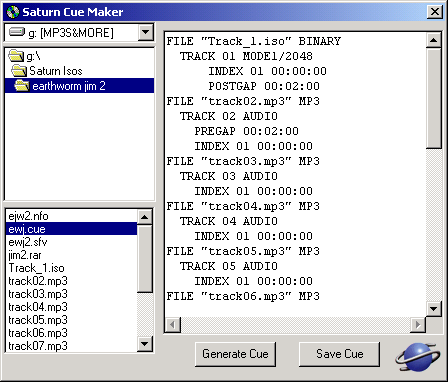
Burning Phase
Compile/build your CDROM or Project or select your Cue Sheet to burn and when at the burning stage, be sure to not exceed a burn speed of x8 where possible (or simply choose the slowest possible) since this may result in reading difficulties.
In the screenshot above, Alcohol is preparing to burn the Cue Sheet created by SEGA Cue Maker of a Mixed-Mode CDROM from an .ISO image for the game data and a set of .WAV files for the CD Audio.
MISC
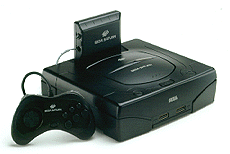
LINKS
Below are some links for some excellent Saturn related websites. If there are any links you would like to see added here please let me know.
Note: These will direct you away from this site.
Sega Saturn UK
An excellent and uniquely stylish website offering high quality content with reviews, beginners guides and downloadable content such as desktop images.
Daves Sega Saturn Page
This website has existed since the launch of the Saturn. It has plenty of content unaltered from their original releases back in the 90's along with a cheat library and plenty of content from magazines of the time with previews of upcoming games.
Saturn Junkyard
http://thesaturnjunkyard.blogspot.com/
Plenty of reviews and footages of some of the most rare items that the console has to offer.
Satakore
Just about everything you needed to know and more such as technical information and news on utilities.
Racketboy
http://www.racketboy.com/retro/
Covers all things Sega within the site with in-depth features for the system and guides for burning games etc.
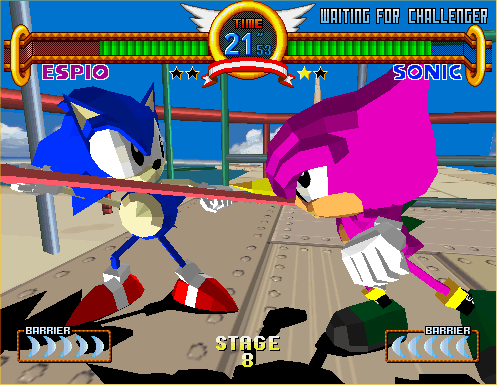
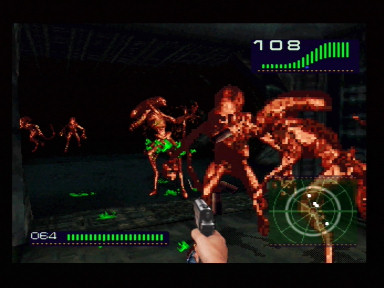
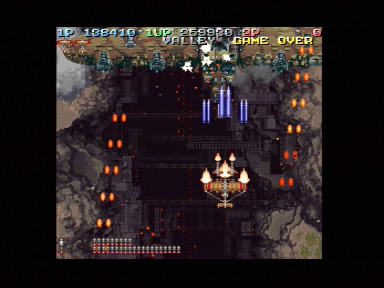

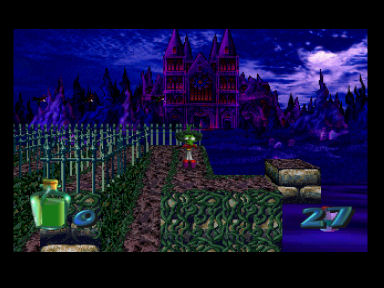
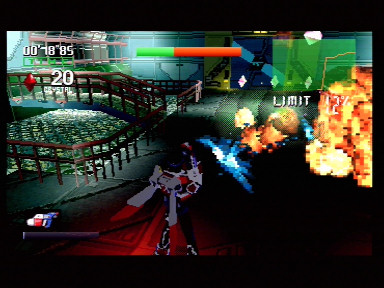
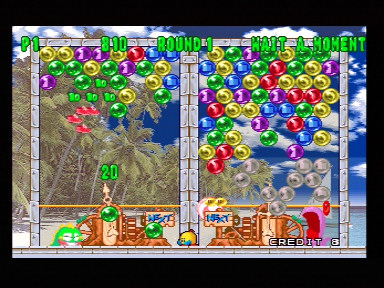
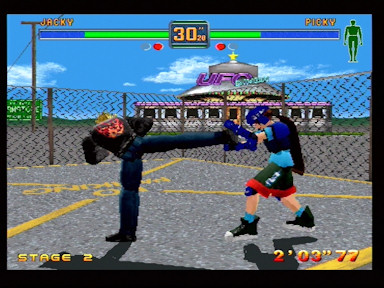
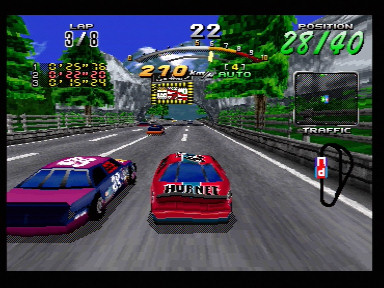
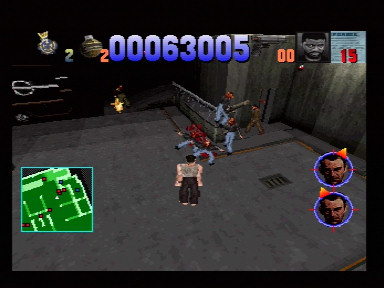
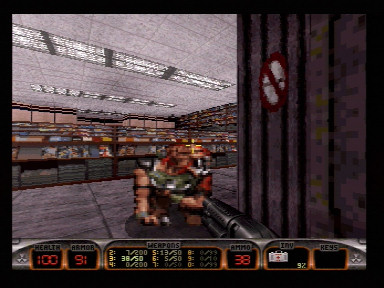

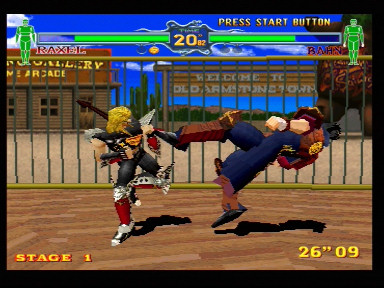
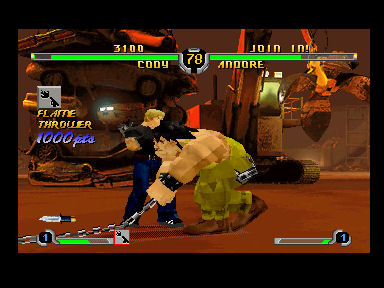
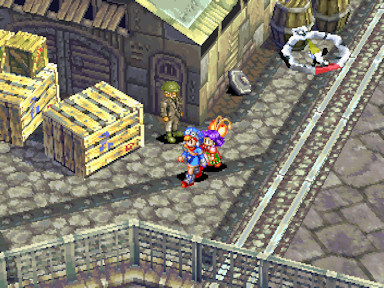
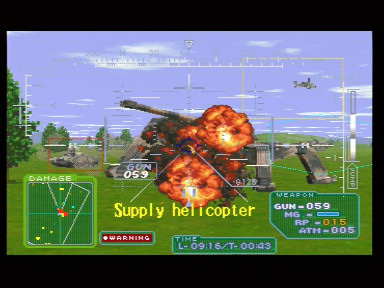
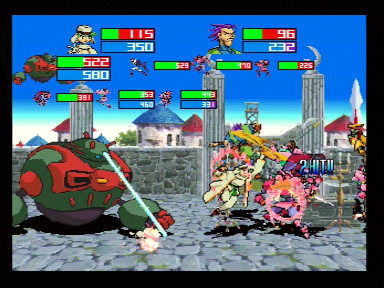
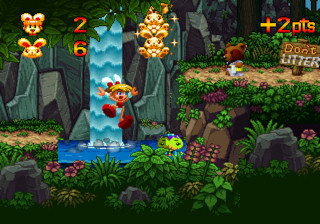
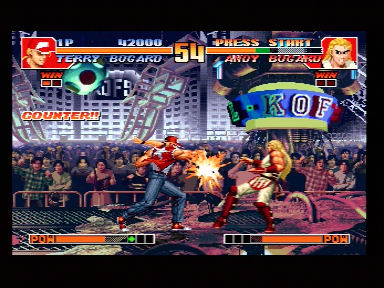
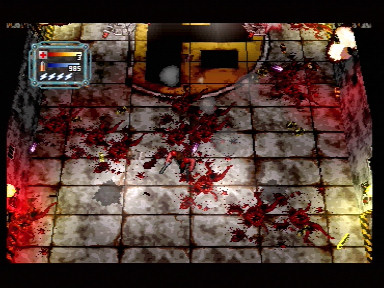
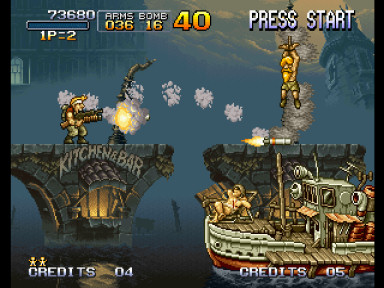
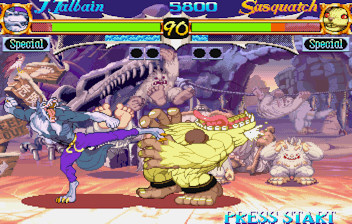

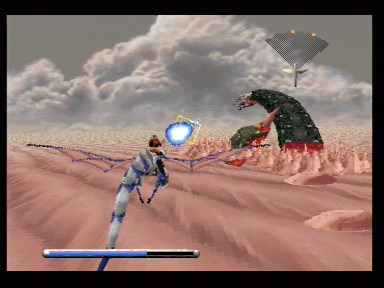
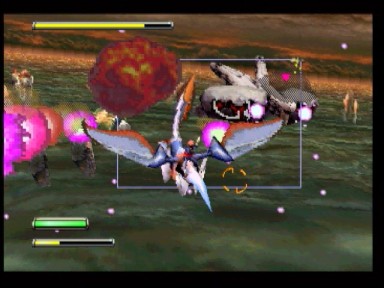
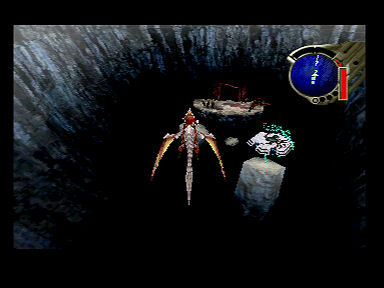
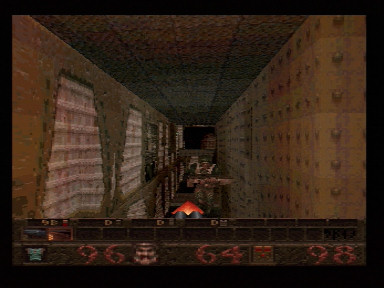
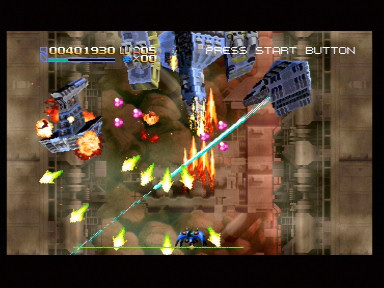
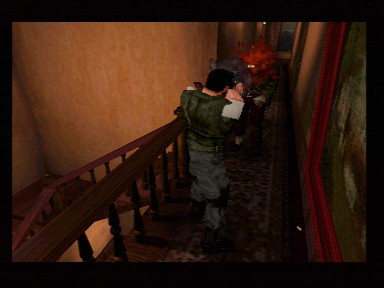
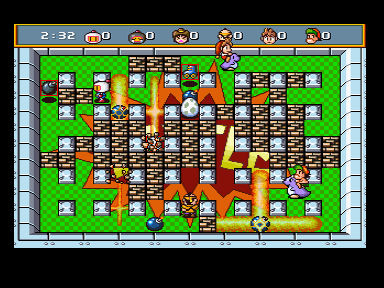
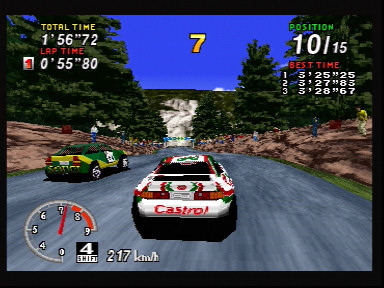
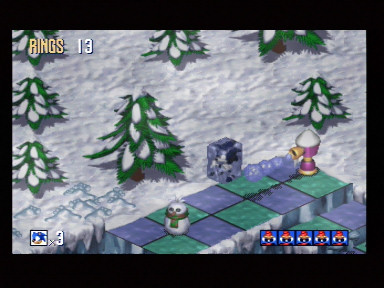
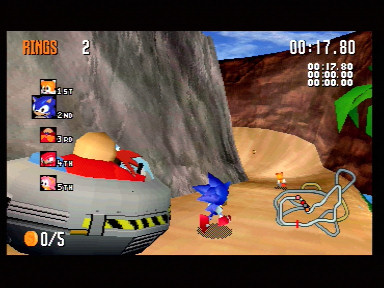
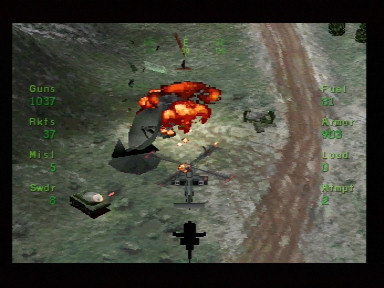
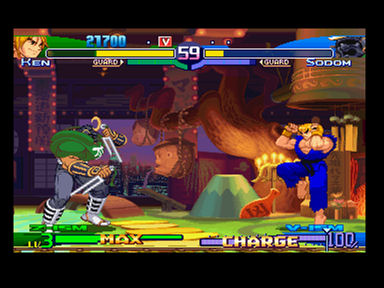
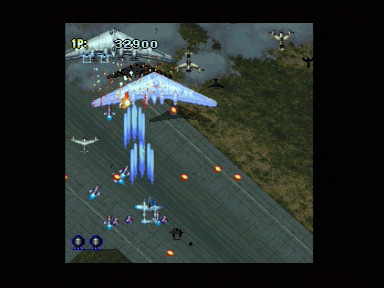
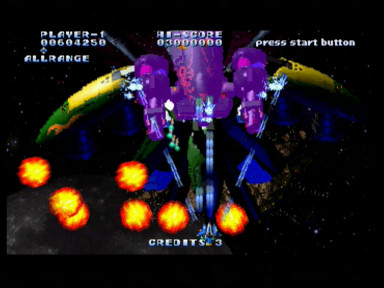
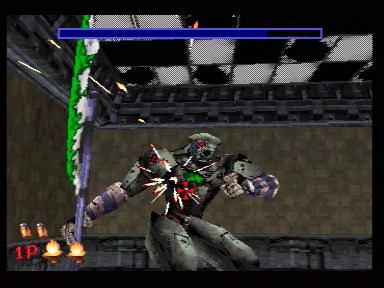
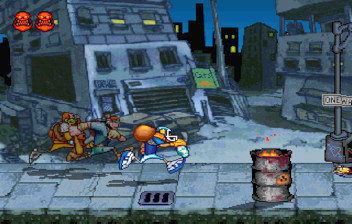
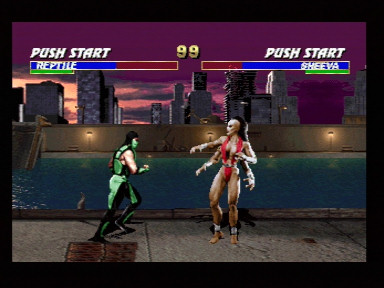
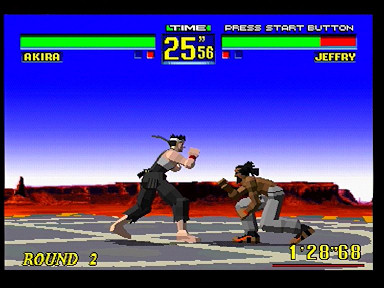
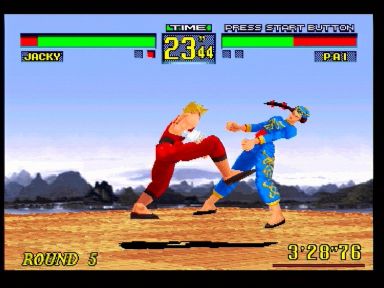
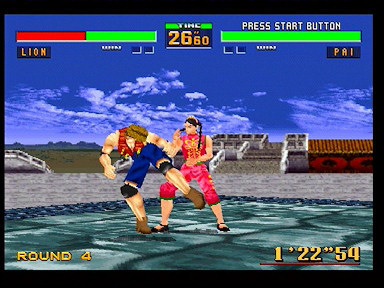
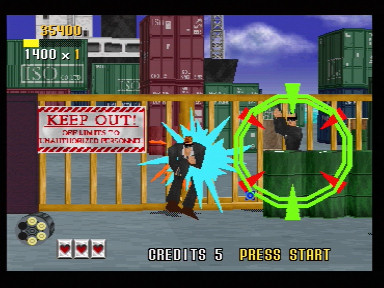
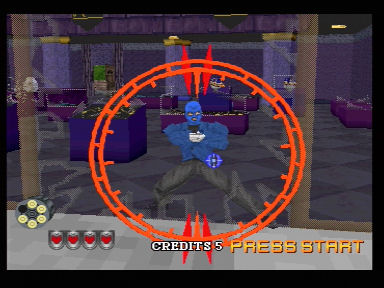
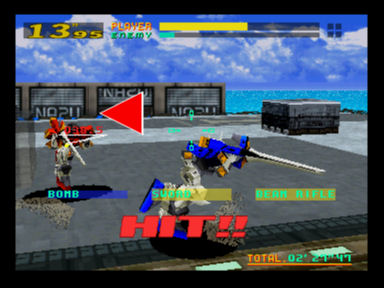
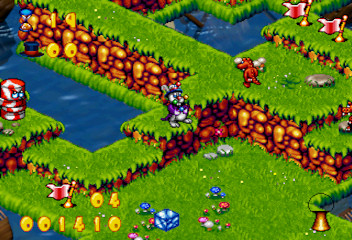
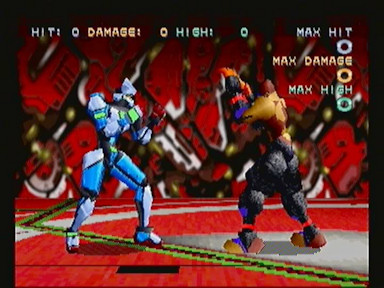
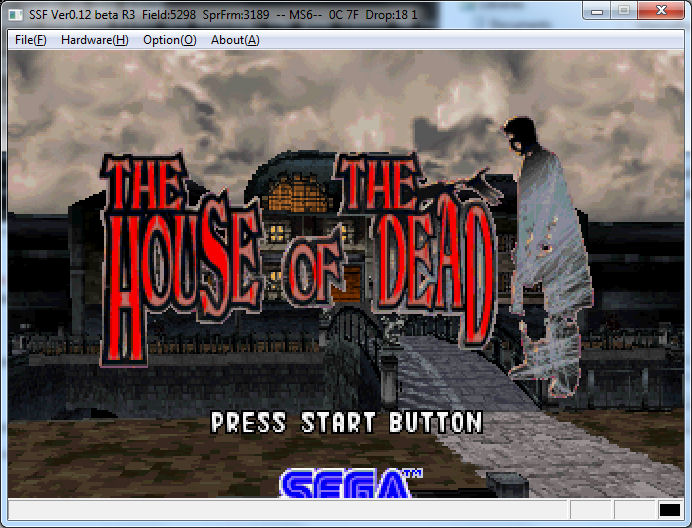


Vs Playstation
Any direct comparison of the polygon output of Saturn and Playstation is pointless because they process them differently. Incidentally the Playstation was also optimised for working with quadrilaterals but the geometry system tended to distort the shapes on screen so developers stuck with standard triangles (polygons) anyway.